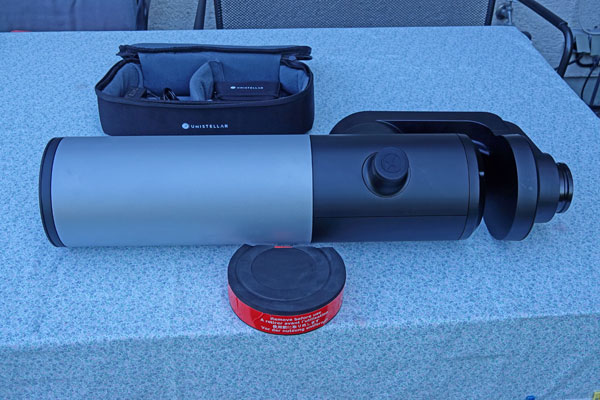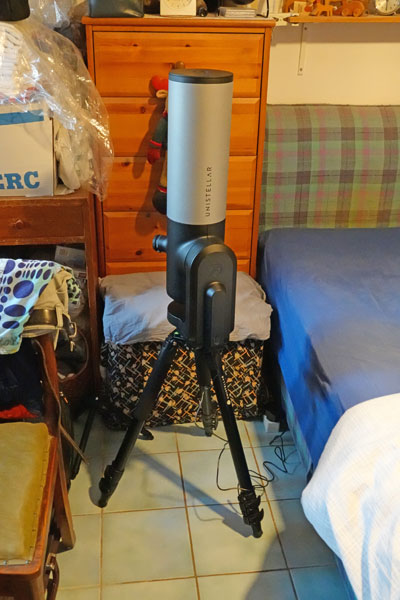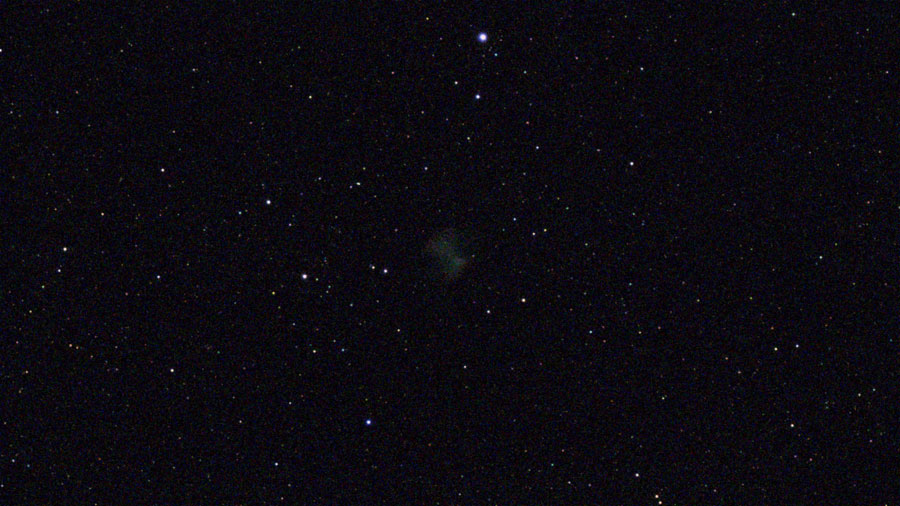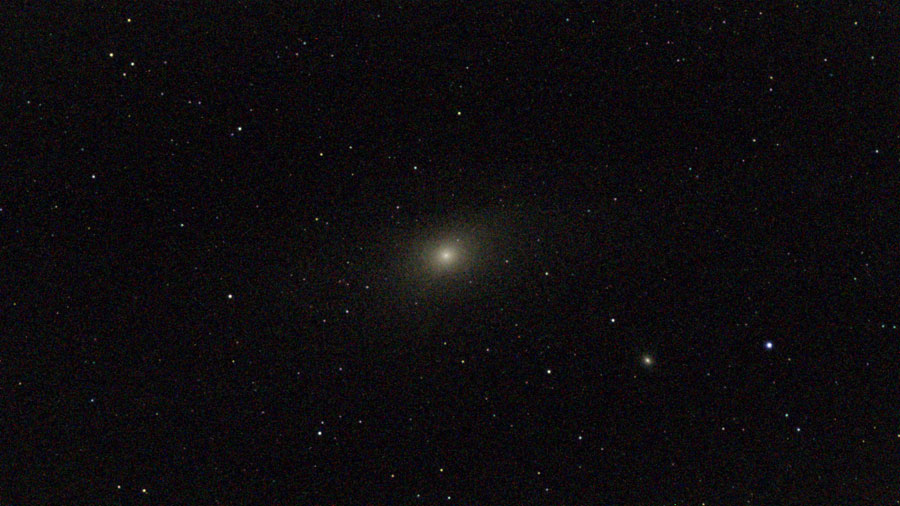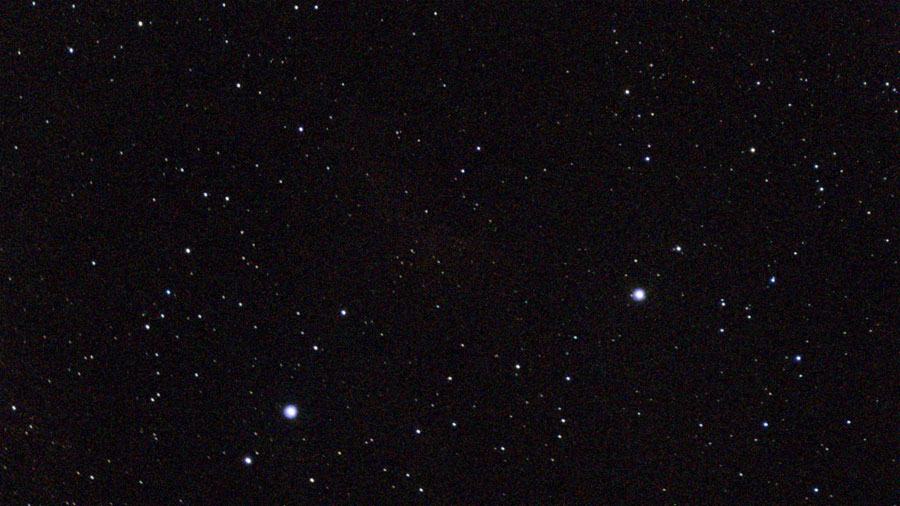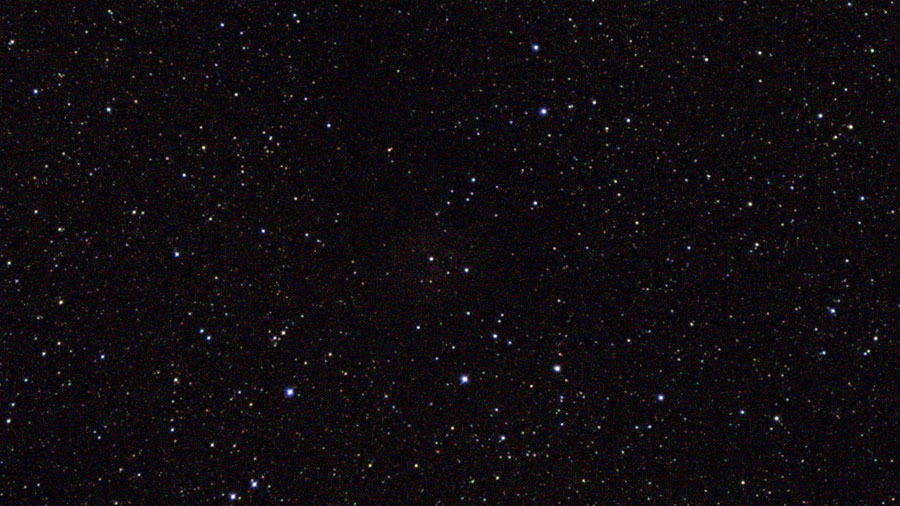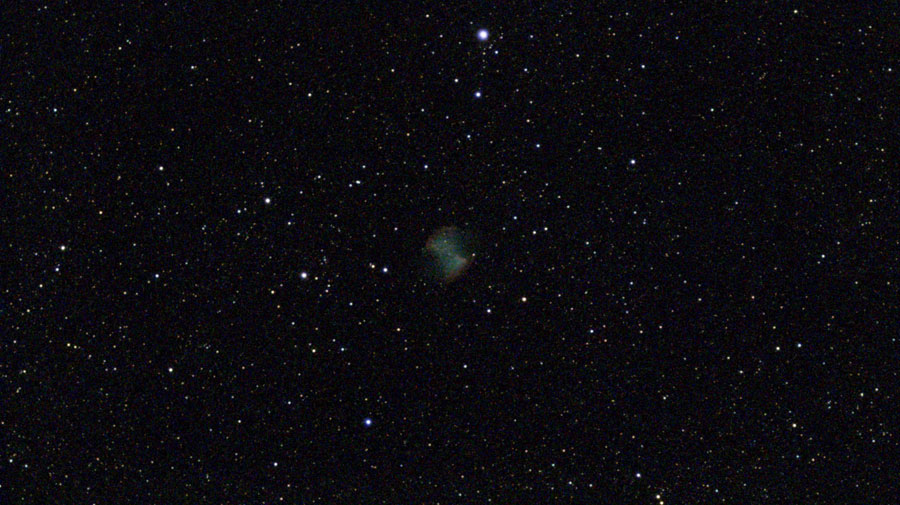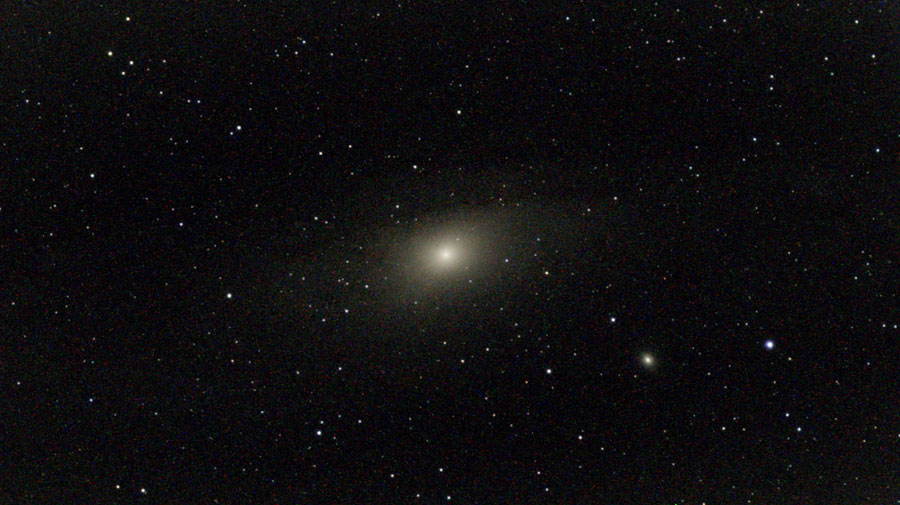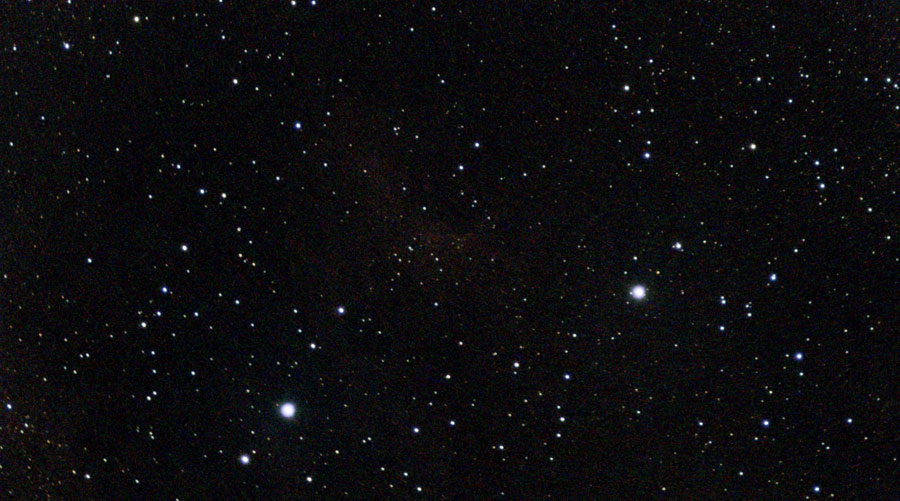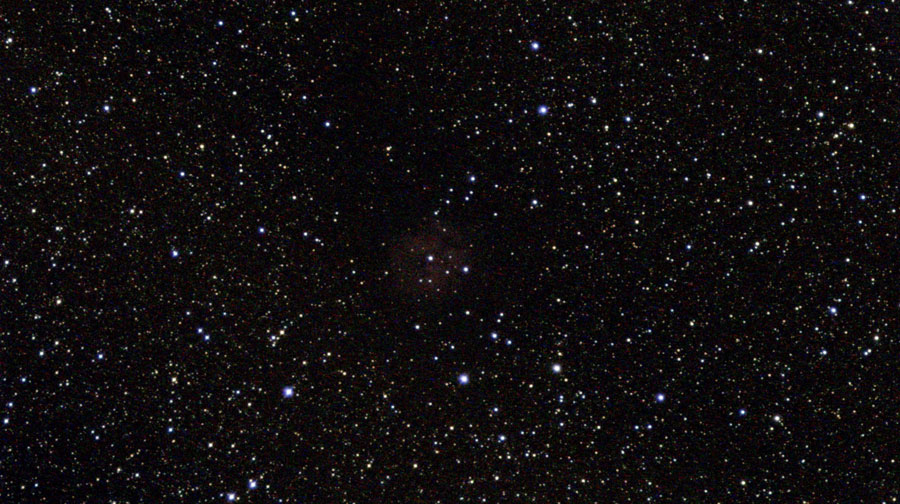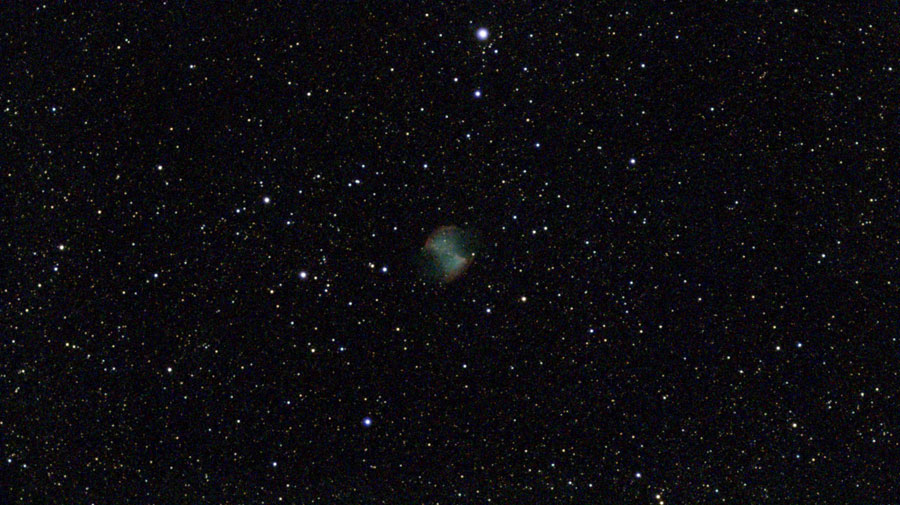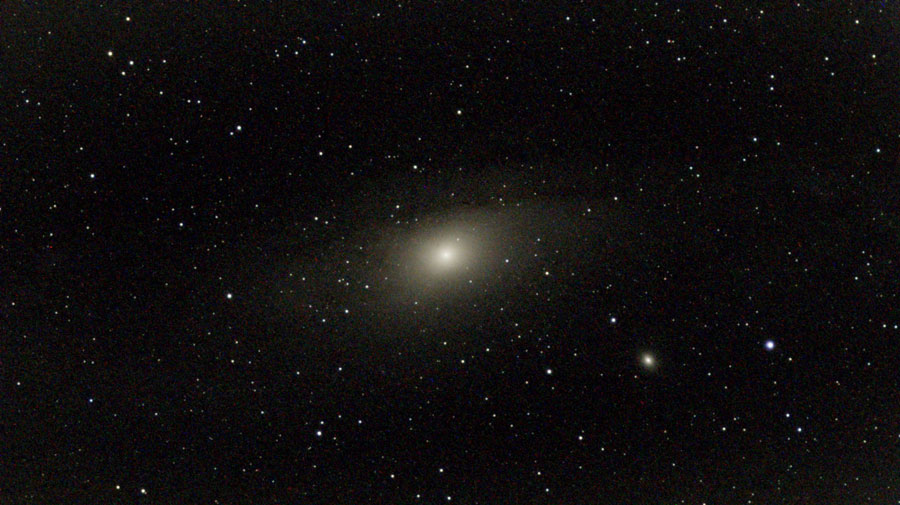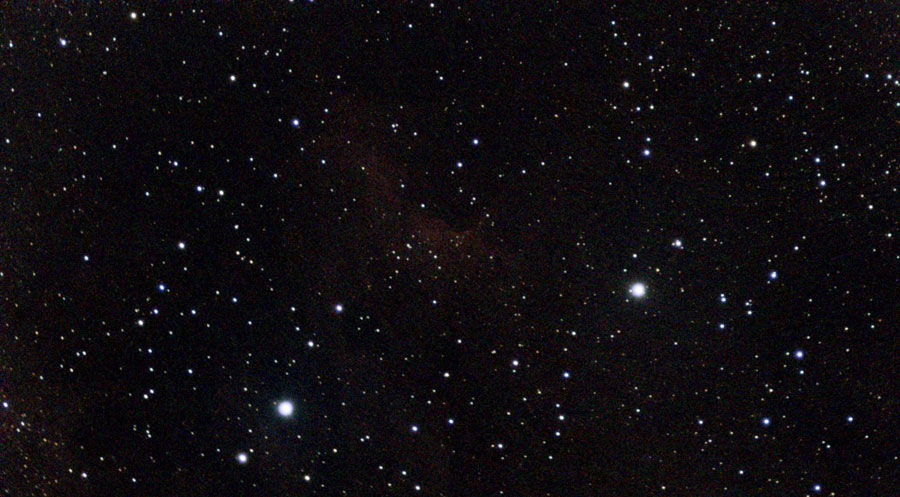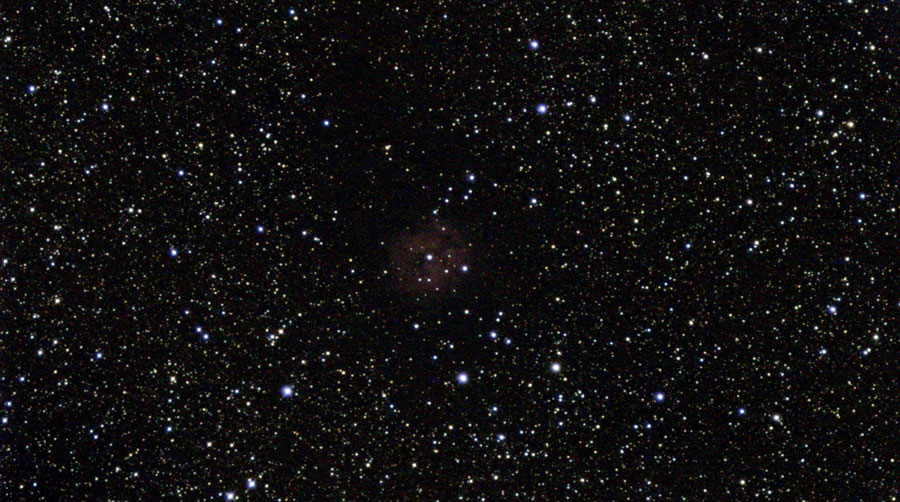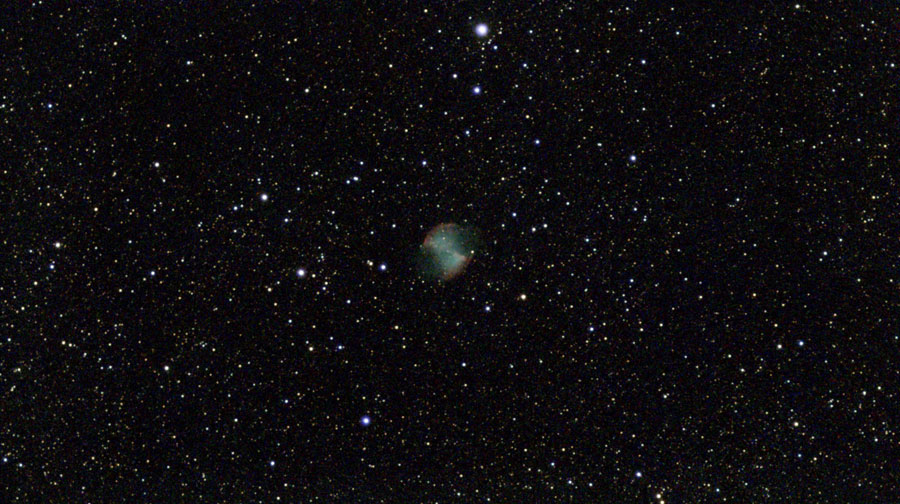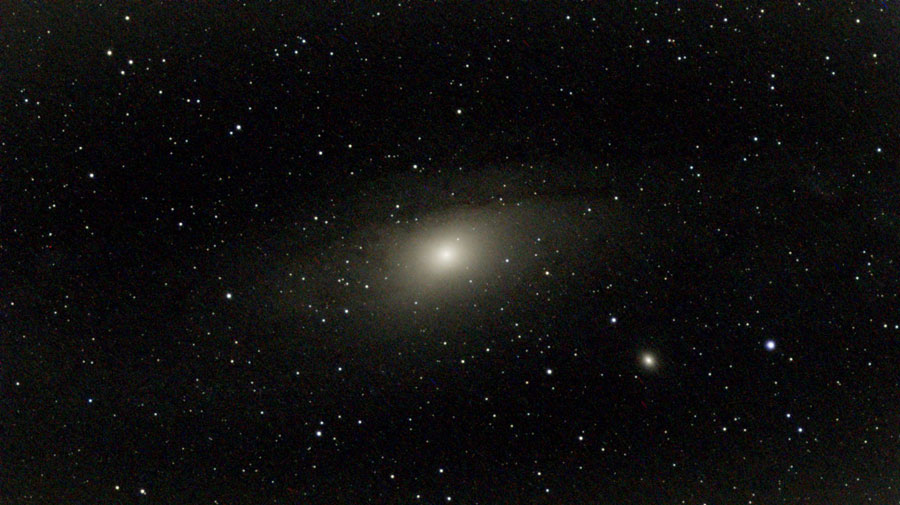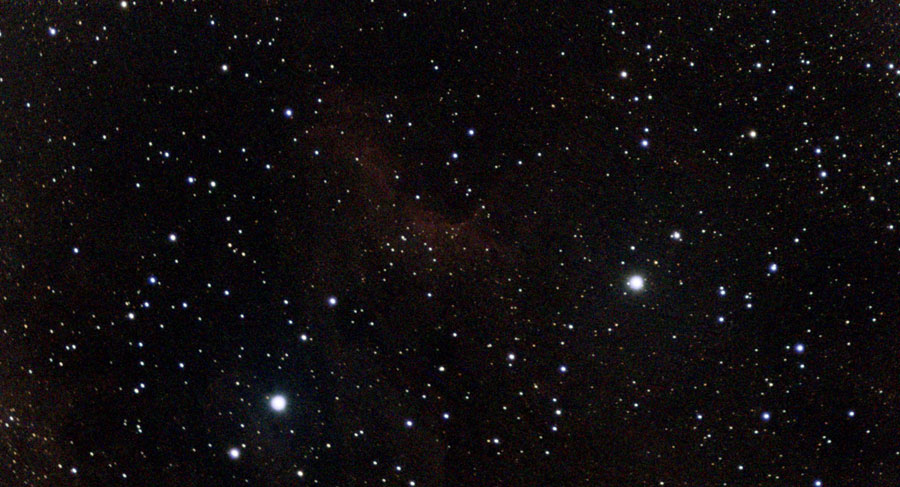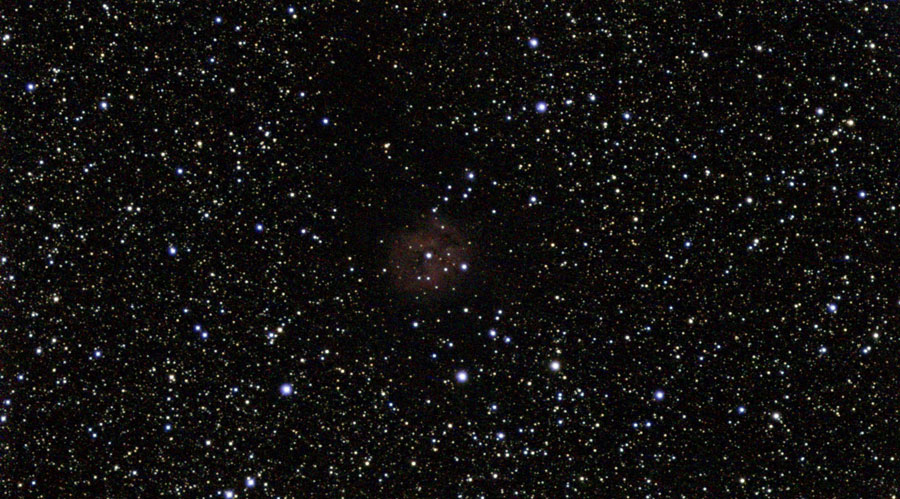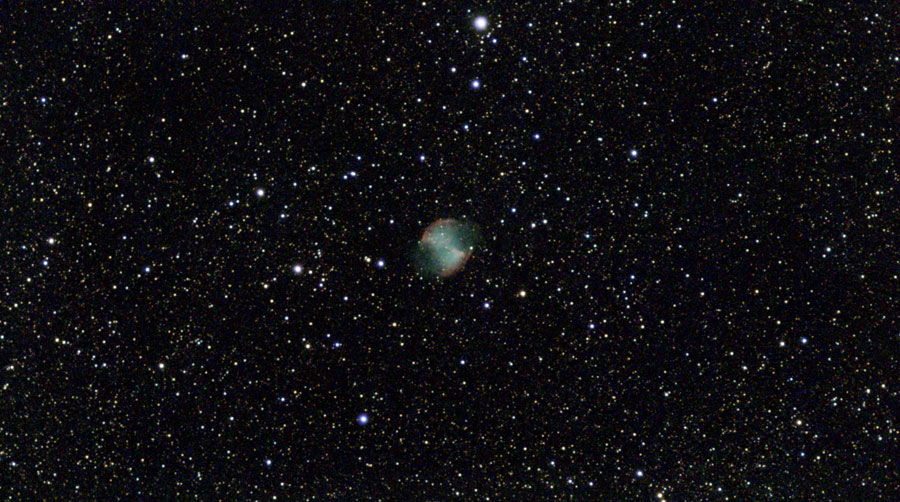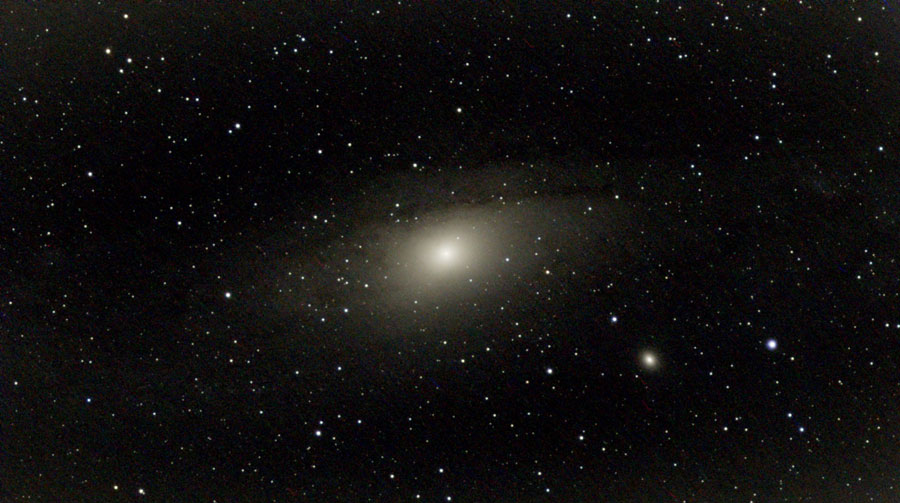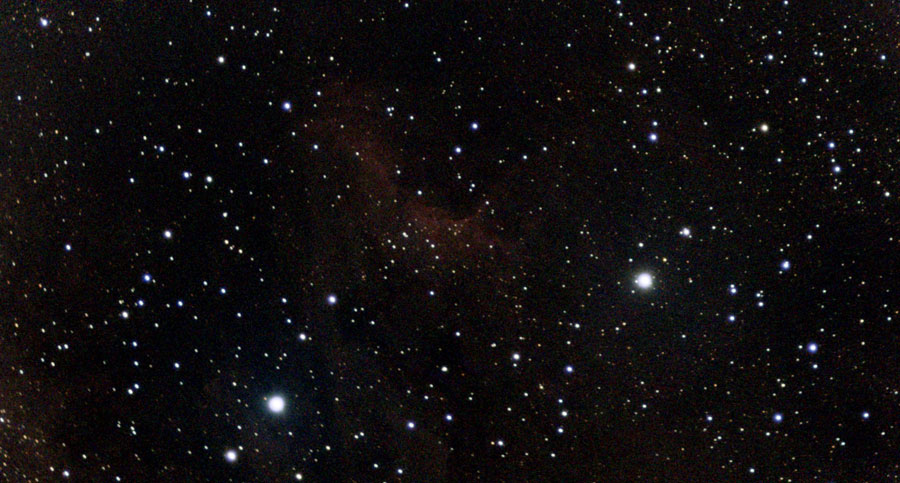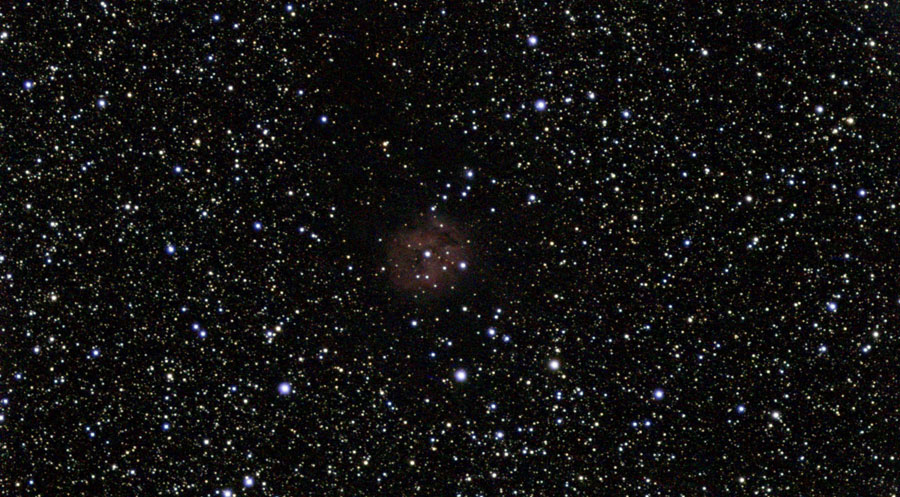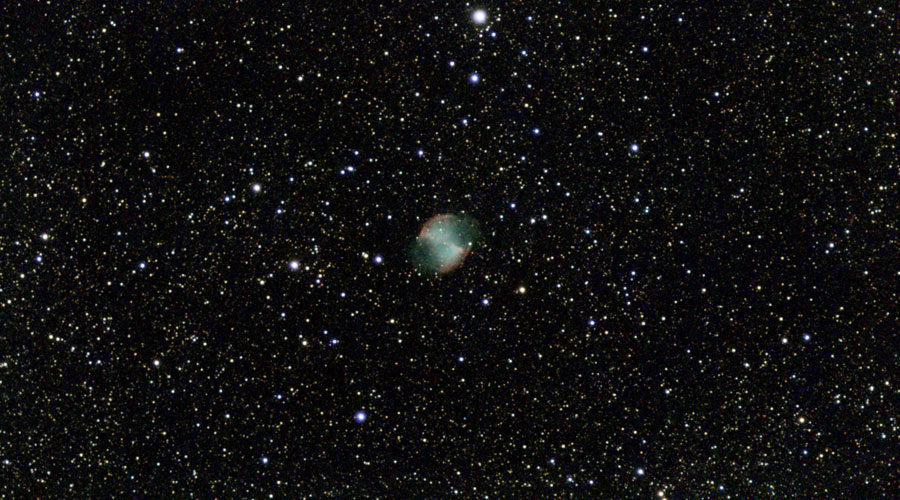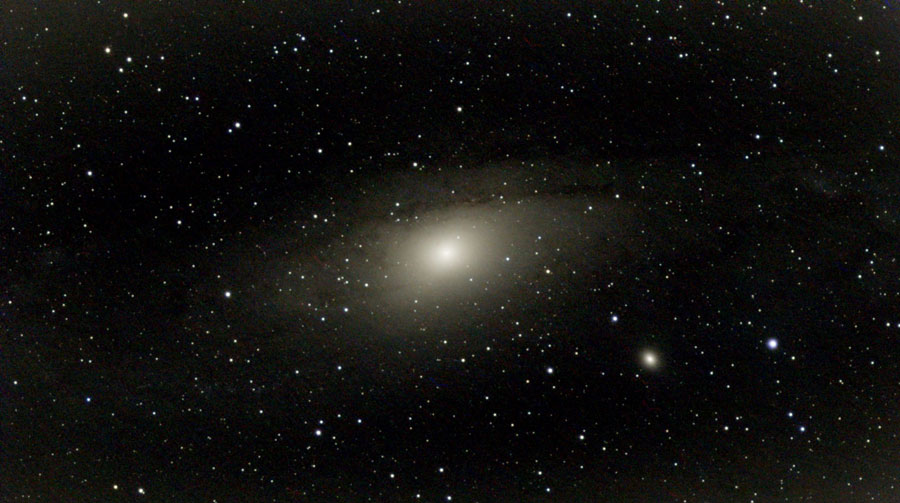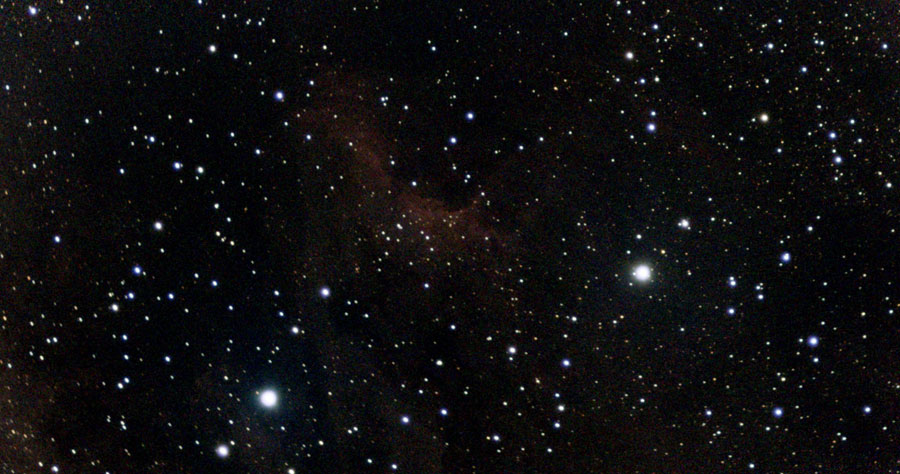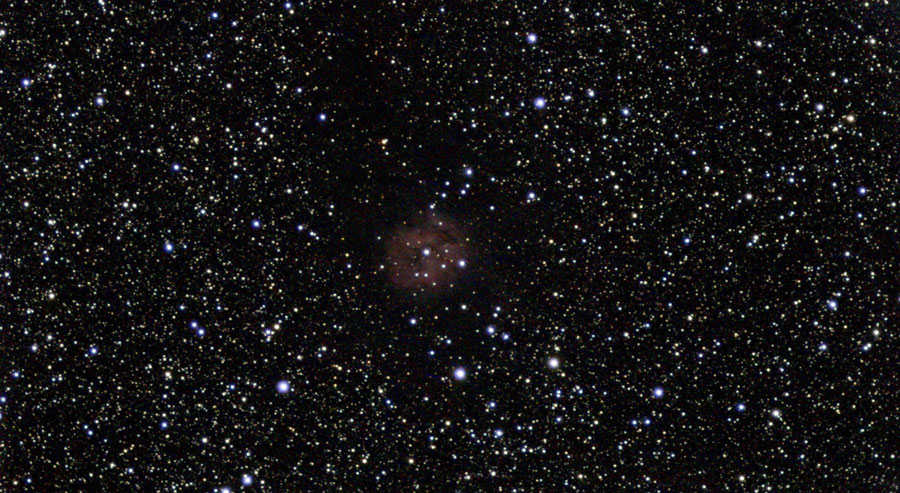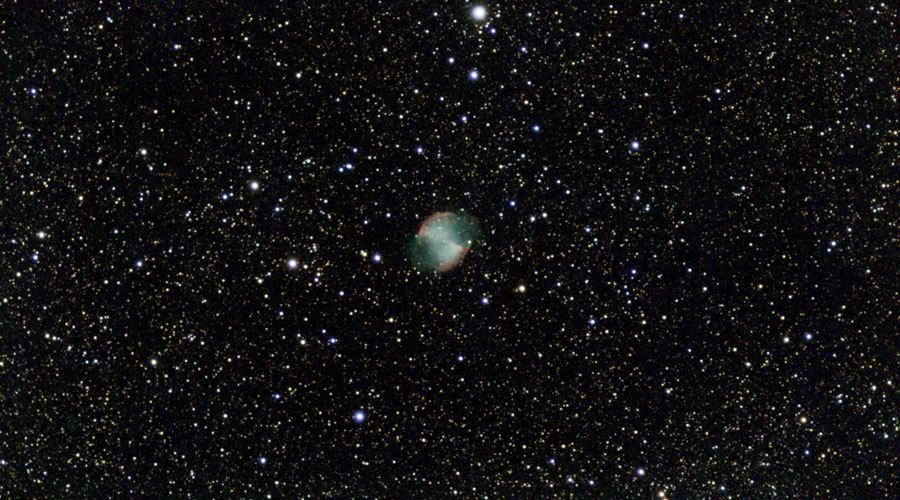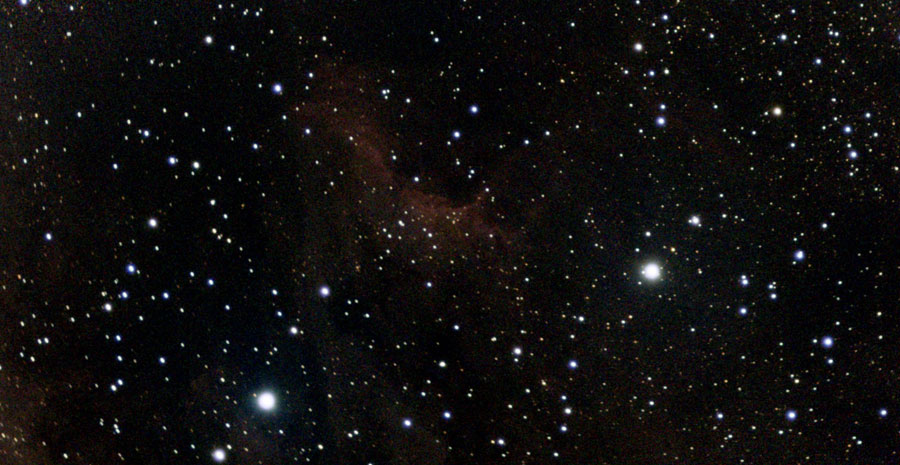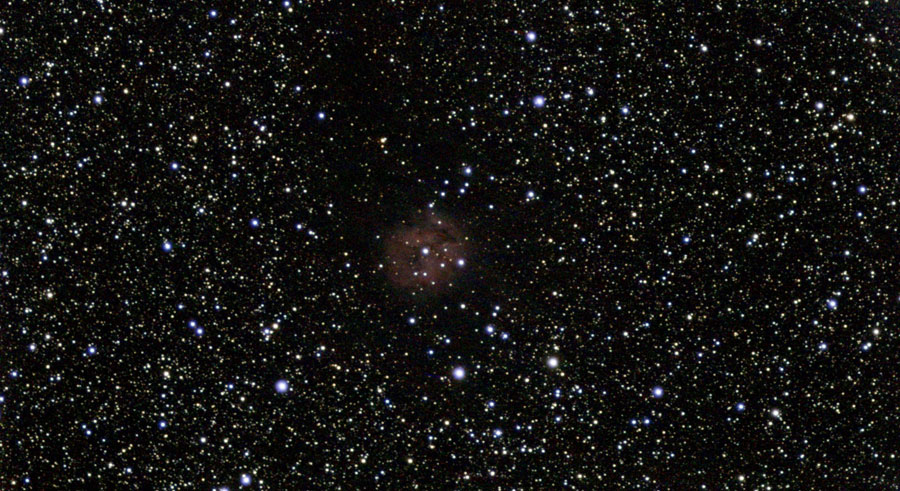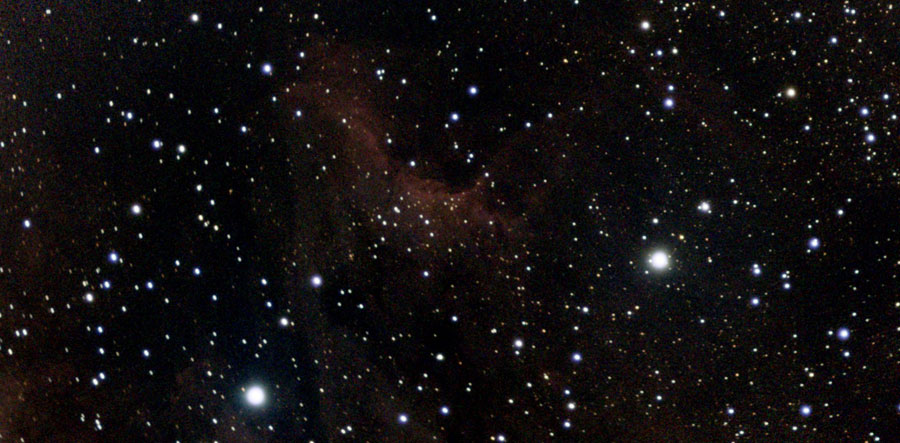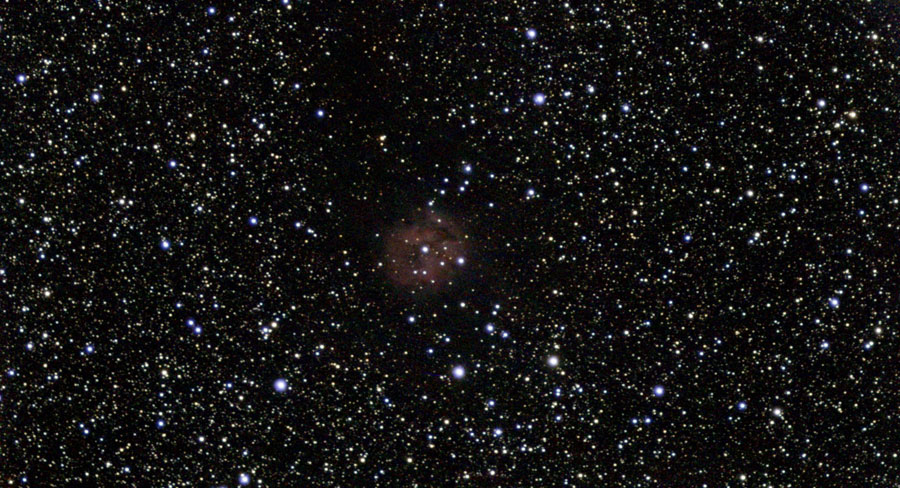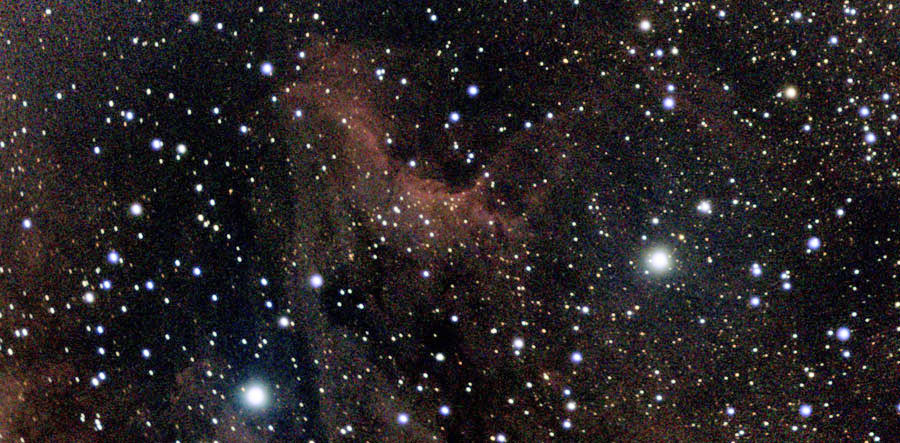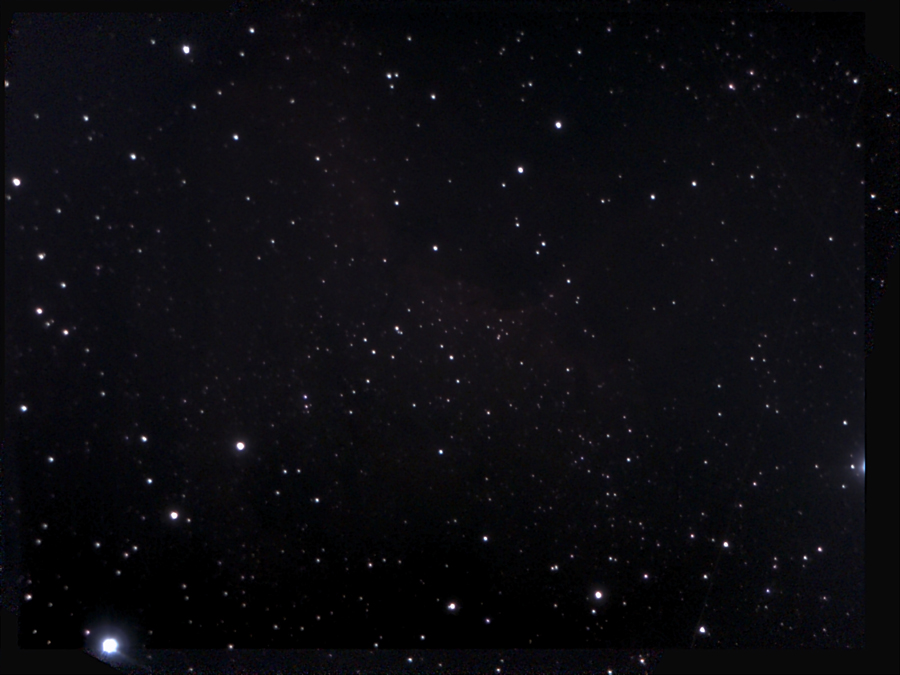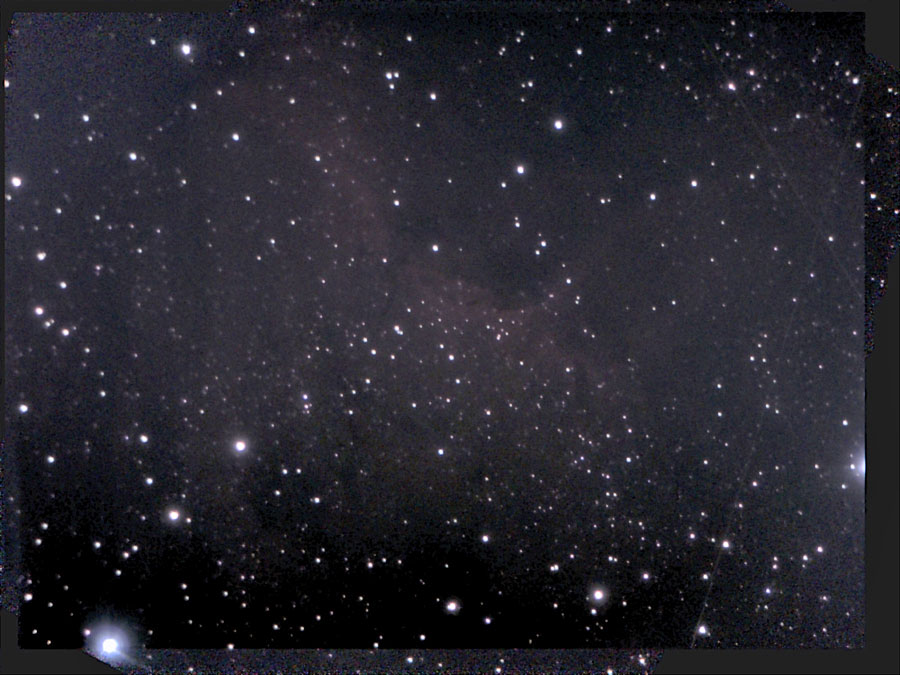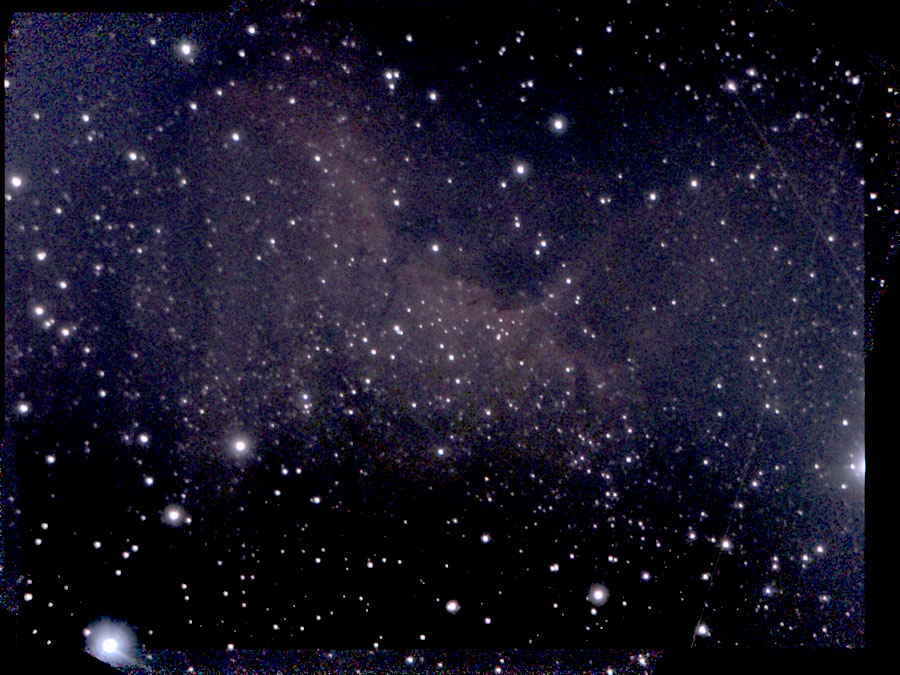Vaonis Vespera - Photo Comparison against Unistellar eVscope 2 - Part 3
Introduction | Observations up to 30 Minutes | Comparison | First Conclusions | Links
Archive
On this page I once again contrast photos from the same DSO taken with my Unistellar eVscope 2 and with my Vaonis Vespera. The point here is to show how the result changes during the first 20-30 minutes and what this tells me about the two telescopes....
Notes:
- See also page Vaonis Vespera - Information.
- See also page Unistellar eVscope 2 - Information.
- See also pages Photo Comparison Vaonis Vespera versus Unistellar eVscope (2) and Photo Comparison Vaonis Vespera versus Unistellar eVscope (2) - Part 2.
Note: As I sold my eVscope 2 and my Vespera, no more new photos will be added.
Introduction
Vespera
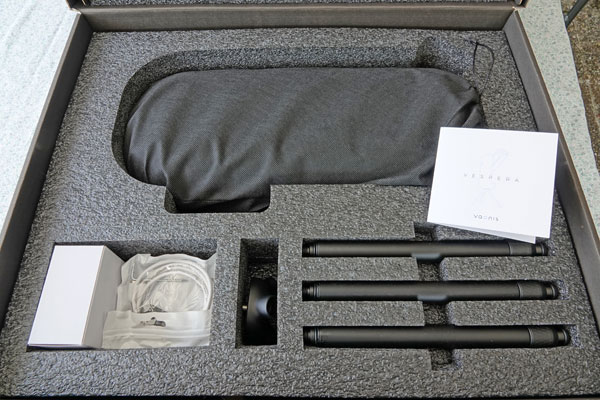 |
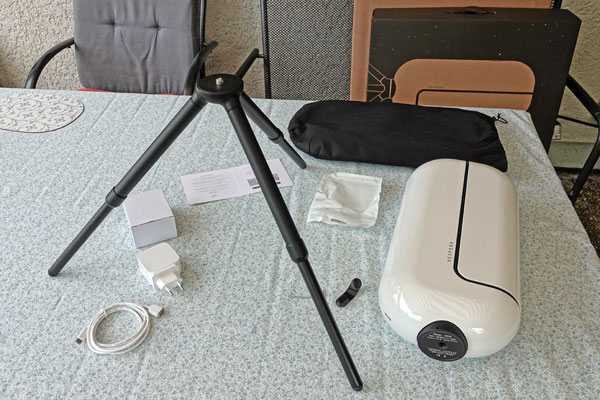 |
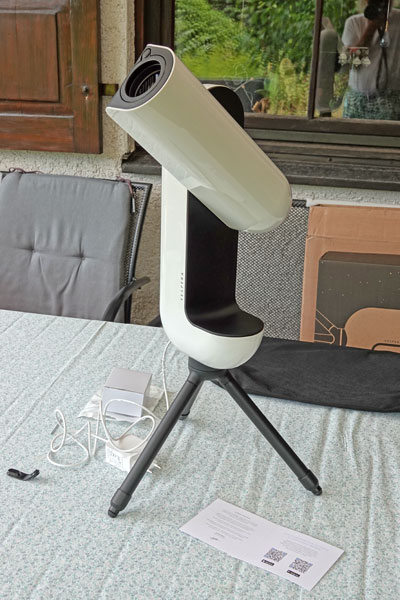 |
Photos: My Vaonis Vespera (end of July 2022)
eVscope 2
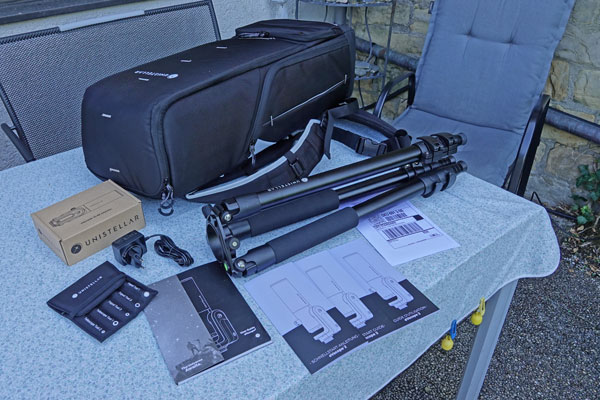 |
Photos: My third eVscope 2 (August 22, 2022)
Observations up to 30 Minutes
On October 22, 2022, I observed and photographed the following Deep Sky Objects with the Vaonis Vespera and the eVscope 2:
- M 27, M 31, IC 5070, IC 5146
One might say that among them are with M 27 and M 31 two easier objects and with the galactic nebulae IC 5070 (Pelican Nebula) and IC 5146 (Cocoon Nebula) two more difficult objects.
The Vespera saves images automatically (if you set it this way) so that I was able to select photos of the same exposure times; only at the end of the observations, there were differences between the objects. For the eVscope 2, I had to take photos manually. Therefore, the photos were taken at different points in time.
Vespera
My first observation is that the DSO and also the stars get brighter over time. This is in agreement with what Vaonis writes:
- It only takes a few seconds for Vespera to deliver the first image of your destination before stacking up dozens, hundreds, or even thousands of others in real-time and so gradually reveal the details and colors of the selected object.
- Whether within a few minutes or over several hours, you decide what level of detail you want to achieve in your final image. Patience is a virtue and the beauties of the Universe are to be won through merit and perseverance.
eVscope 2
With the eVscope 2, I took photos in rectangular and square format. I only present the quadratic versions here, because these are labeled (partly with the wrong name - a bug in the app).
M 27 |
M 31 |
IC 5070 |
IC 5146 |
|||
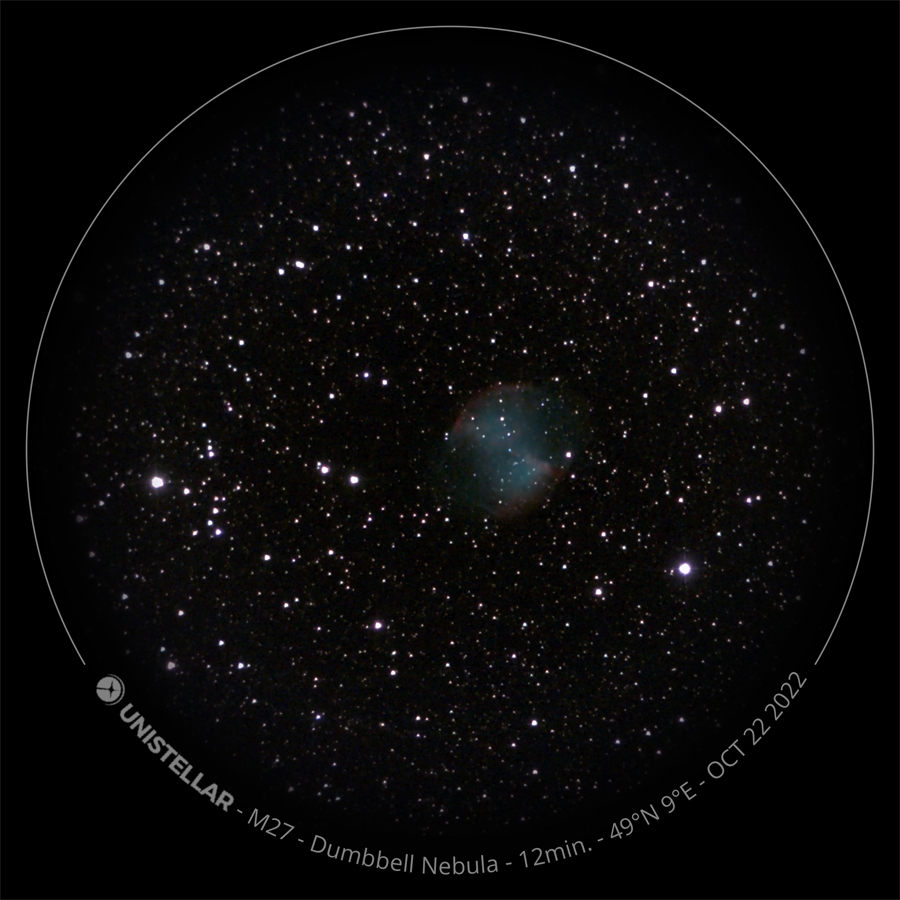 |
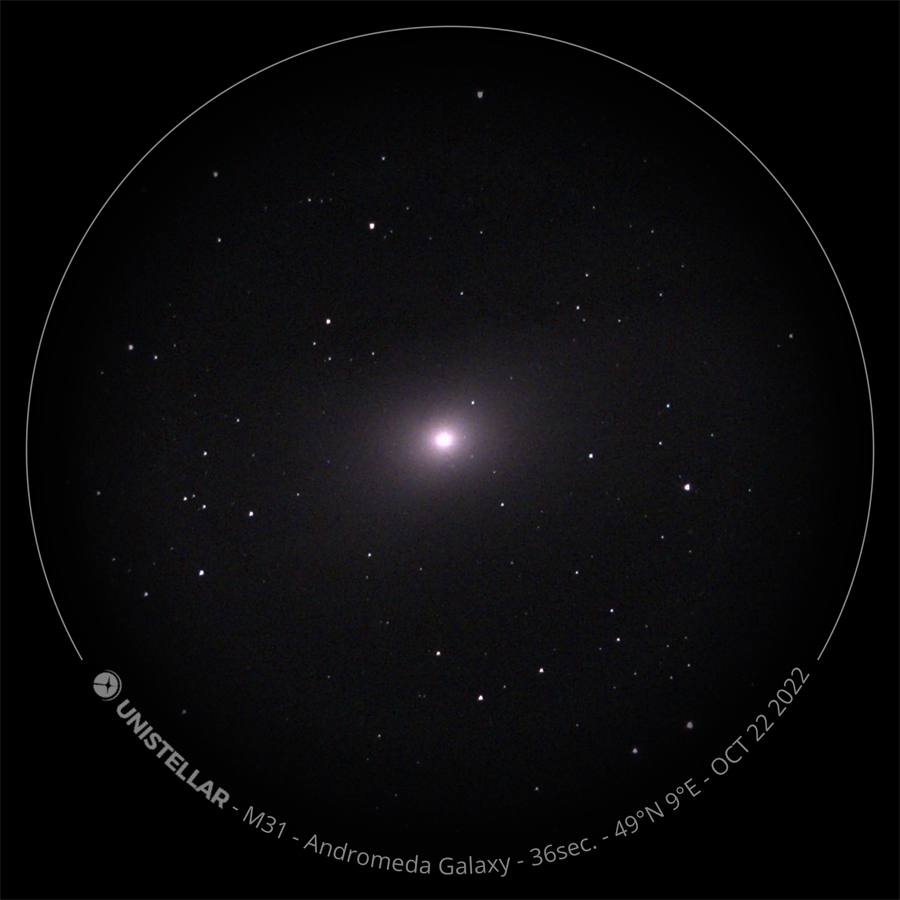 |
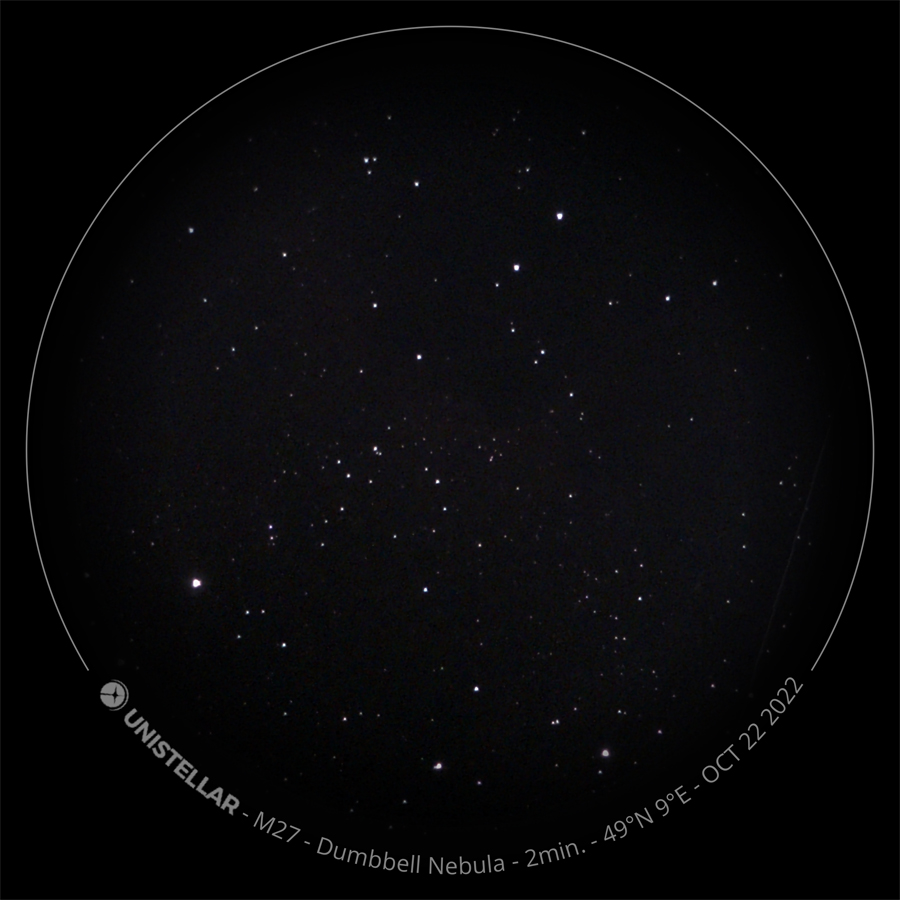 |
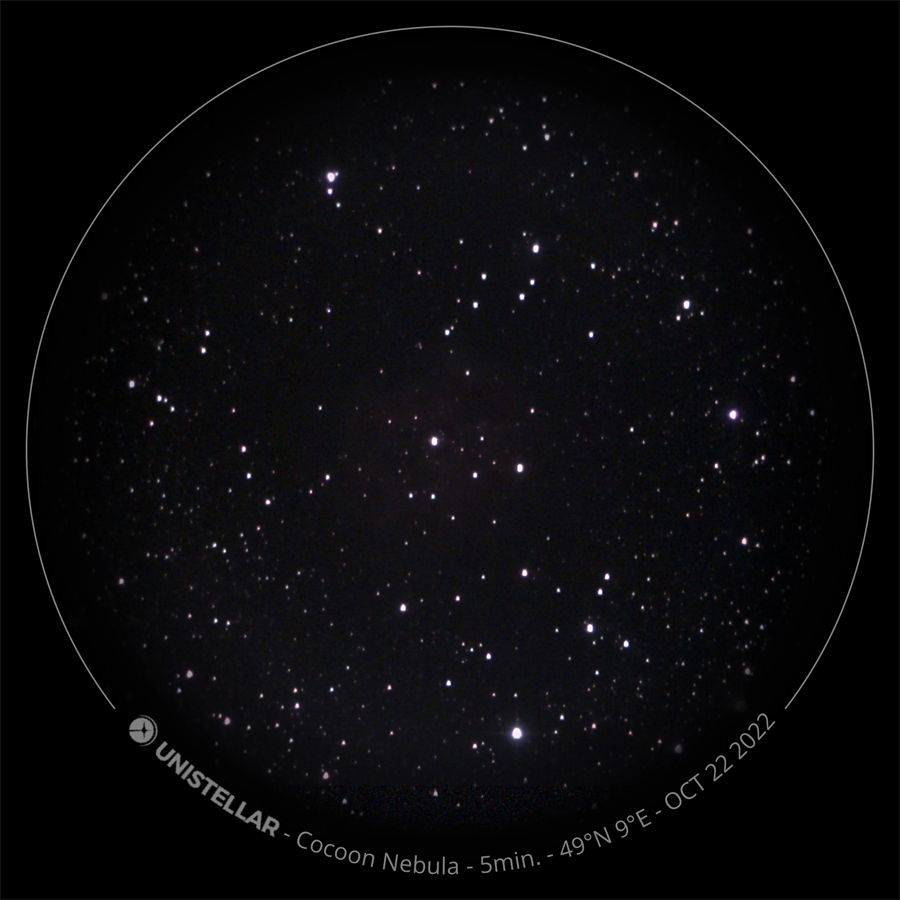 |
|||
| 12 min | 36 sec | 2 min | 5 min | |||
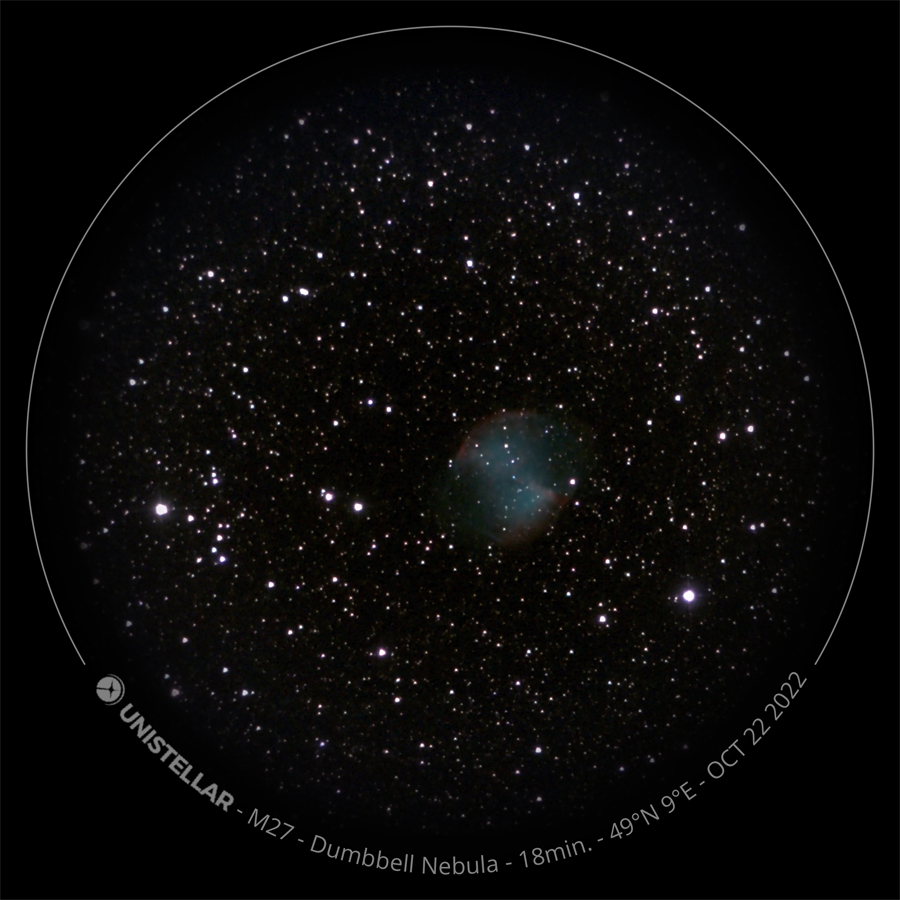 |
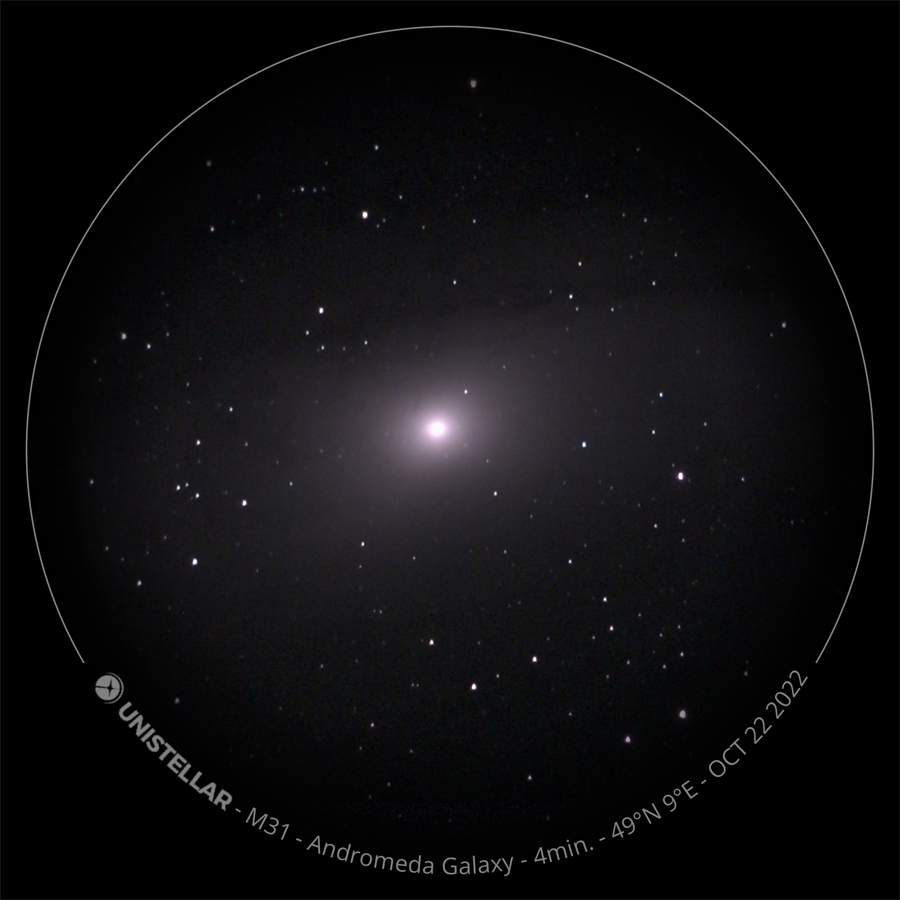 |
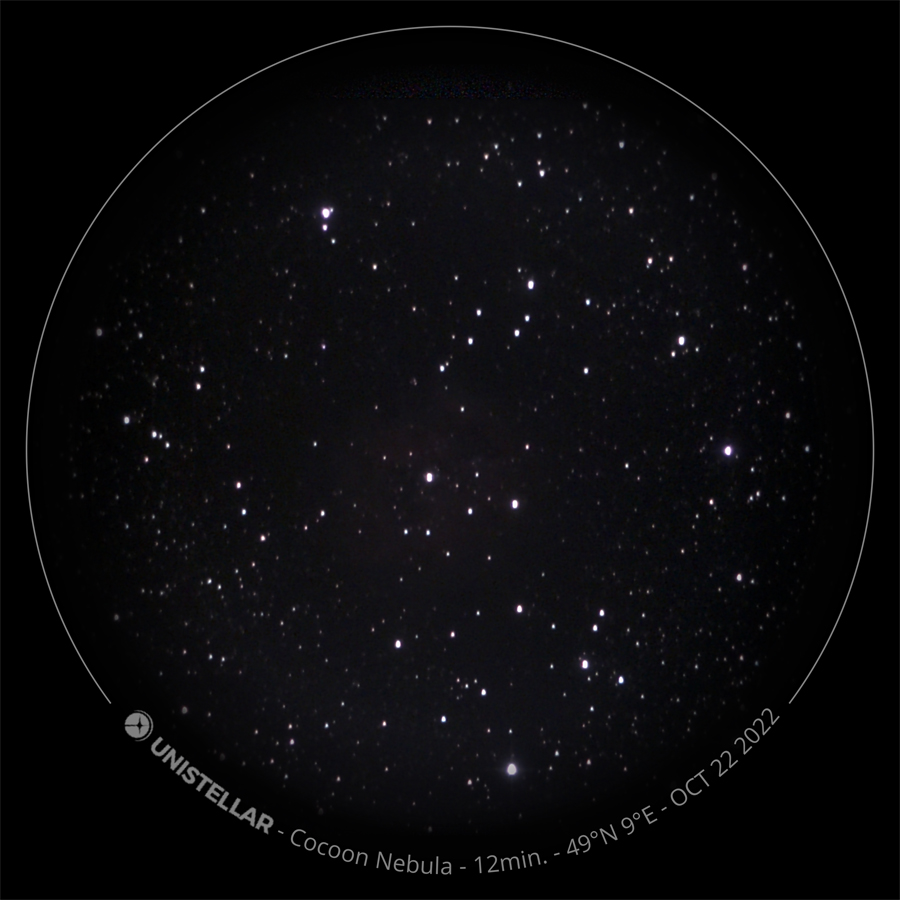 |
||||
| 18 min | 4 min | 12 min | ||||
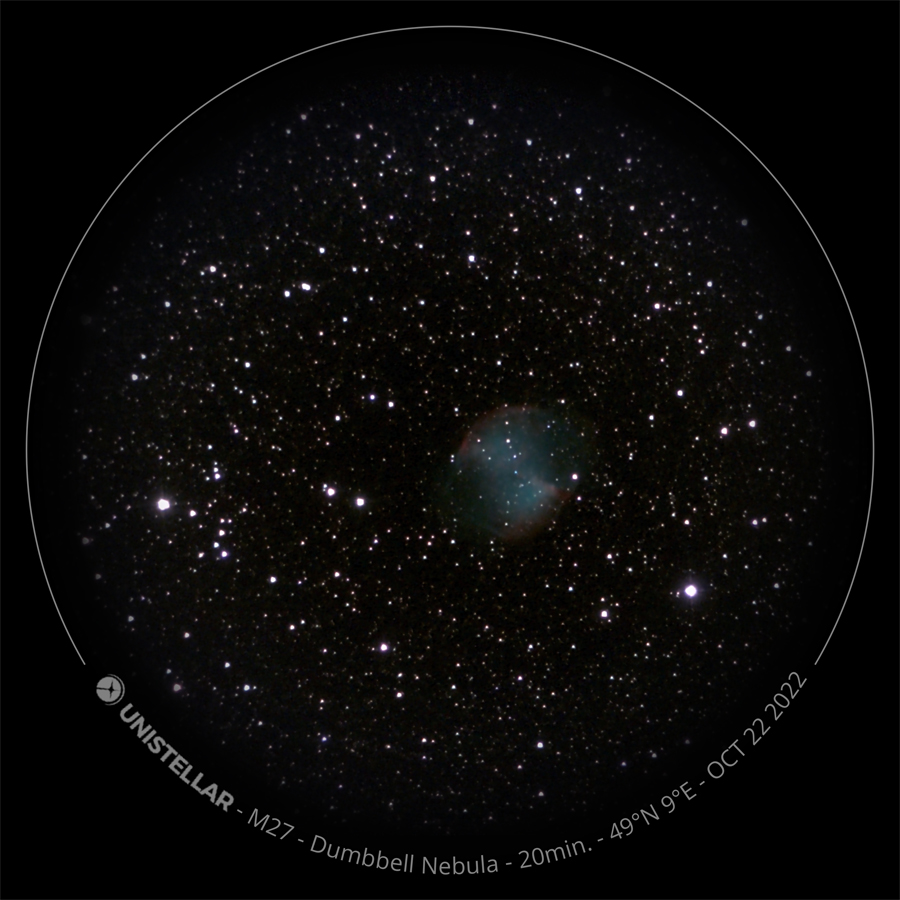 |
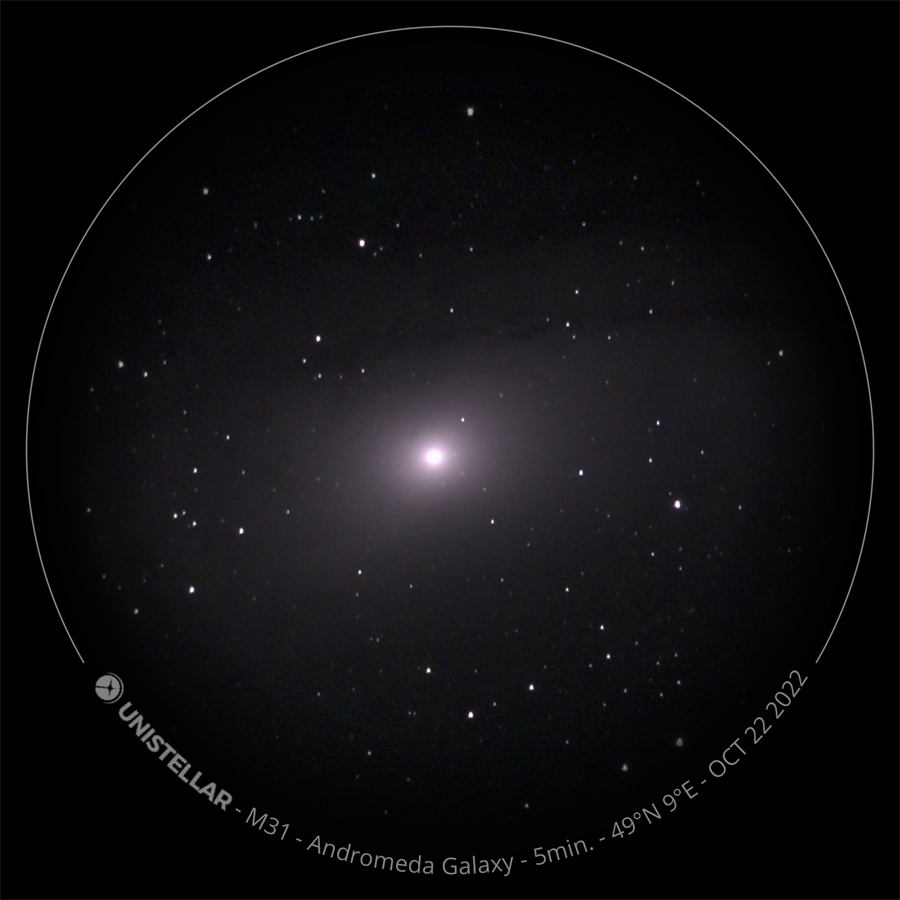 |
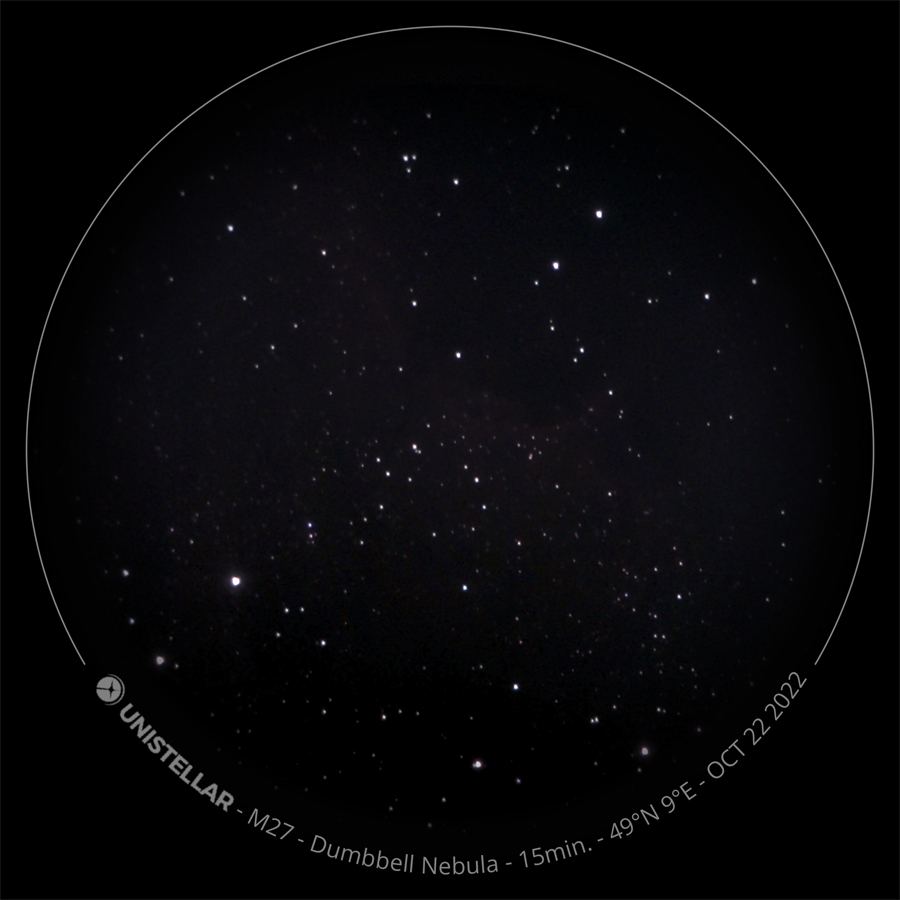 |
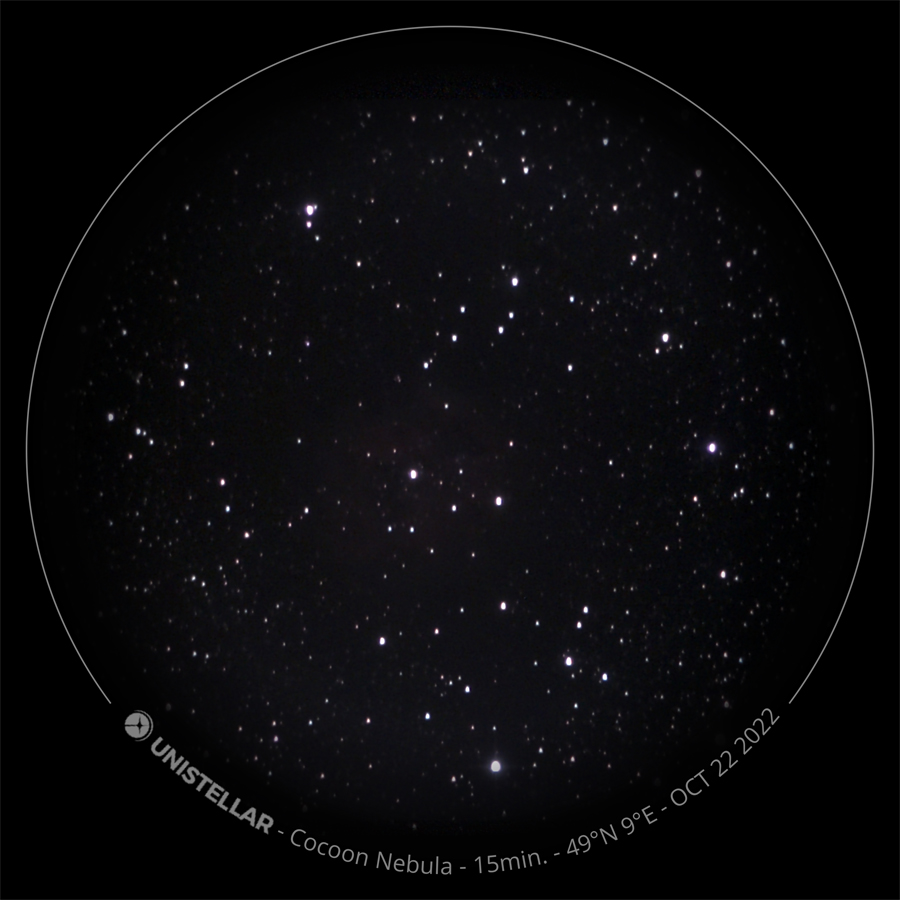 |
|||
| 20 min | 5 min | 15 min | 15 min | |||
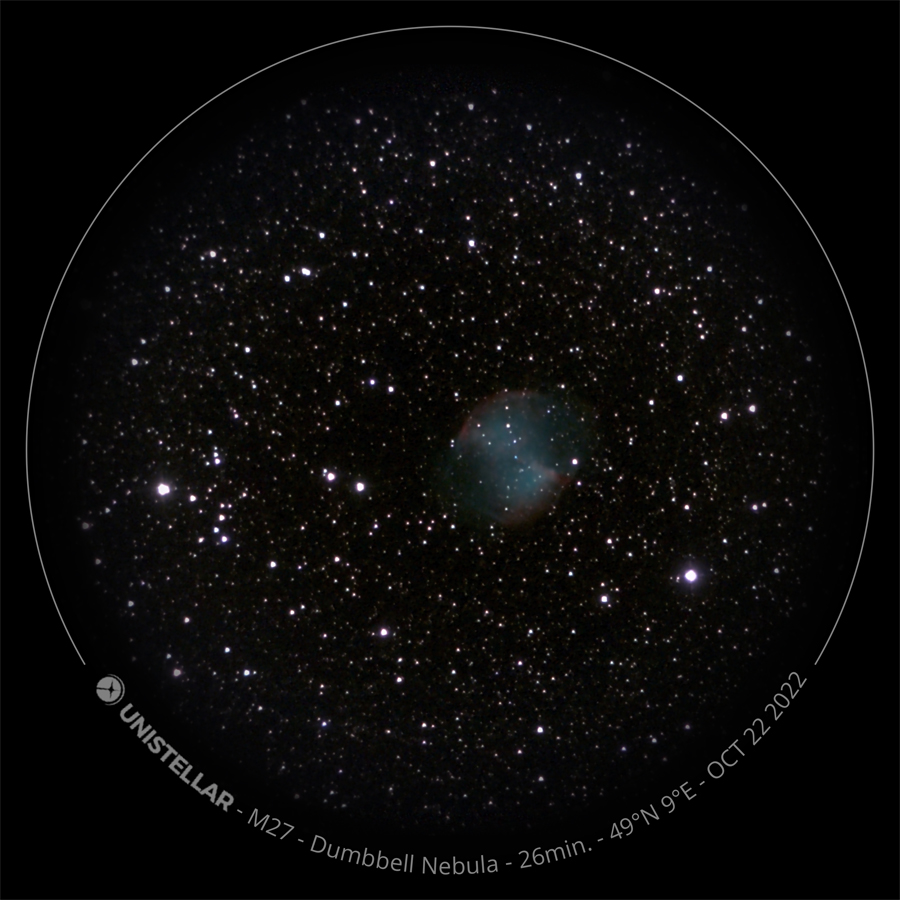 |
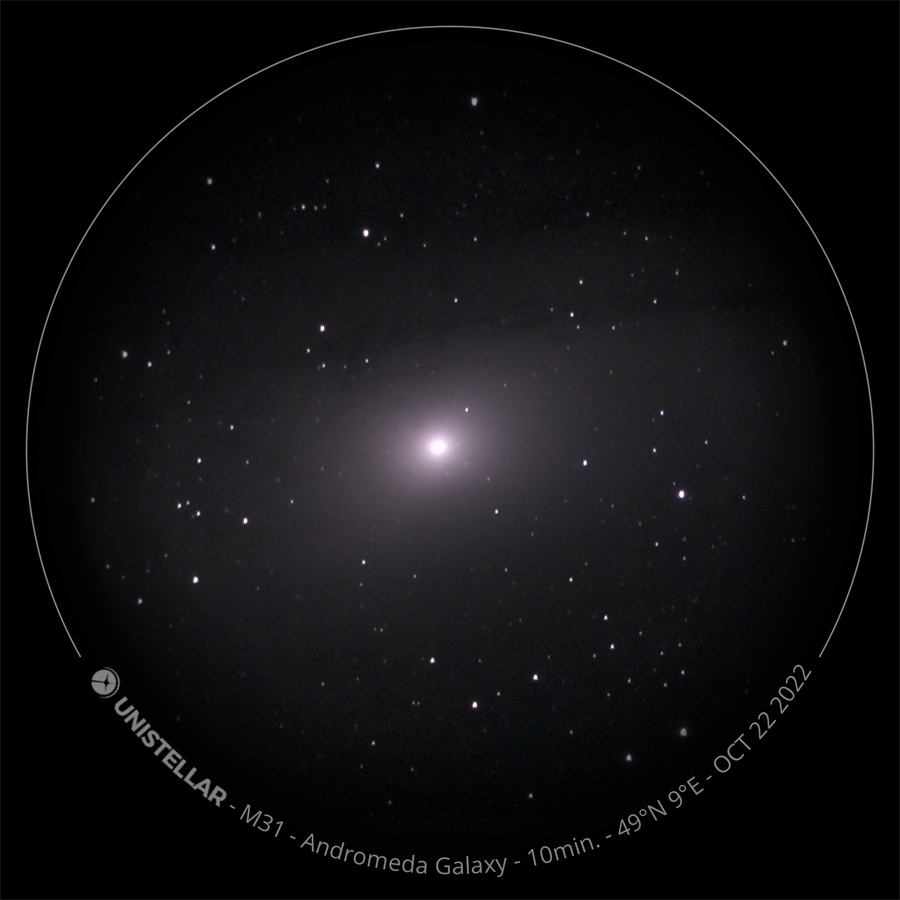 |
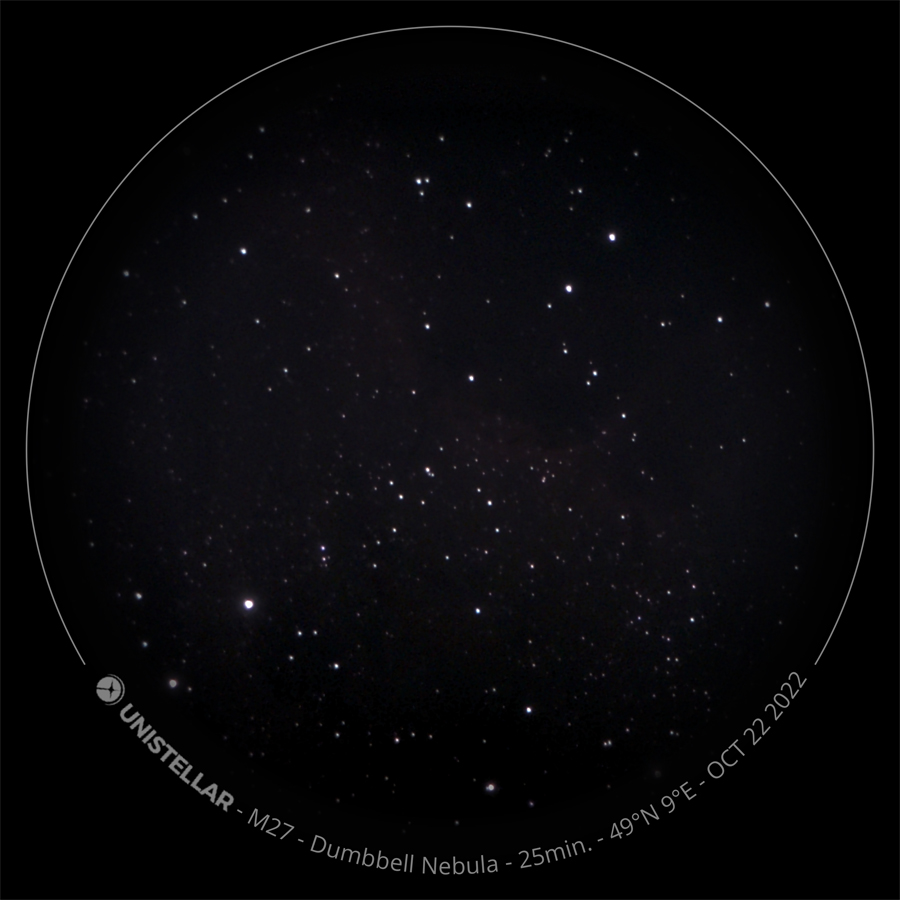 |
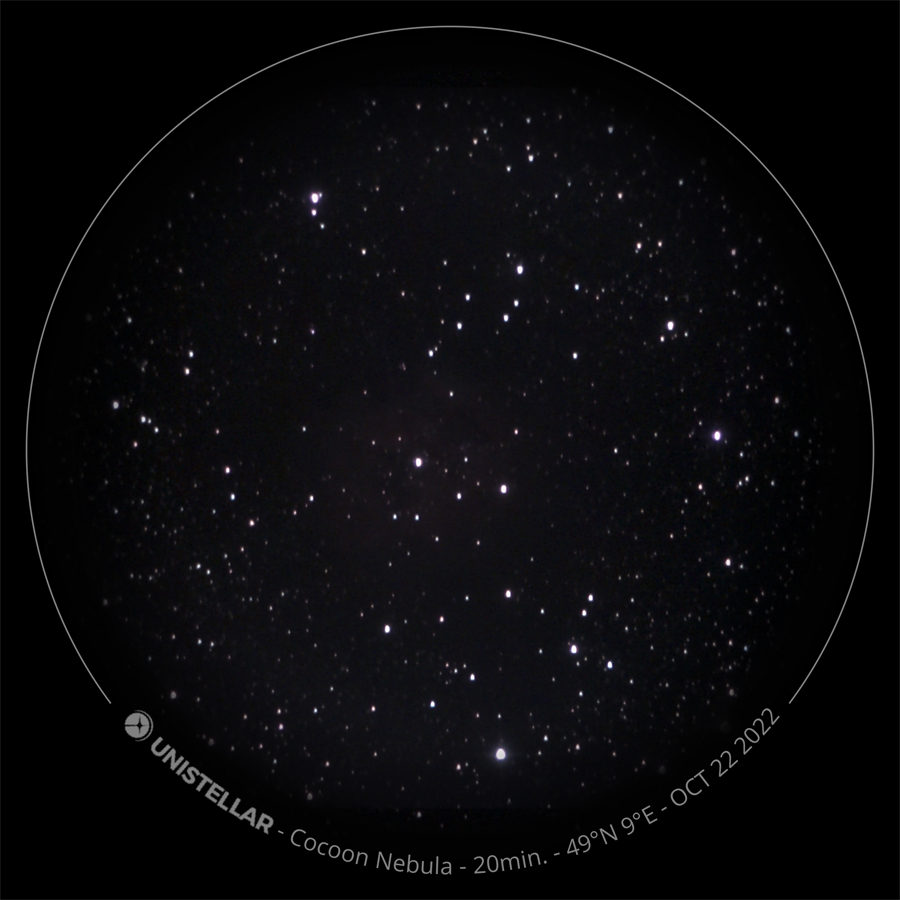 |
|||
| 26 min | 10 min | 25 min | 20 min | |||
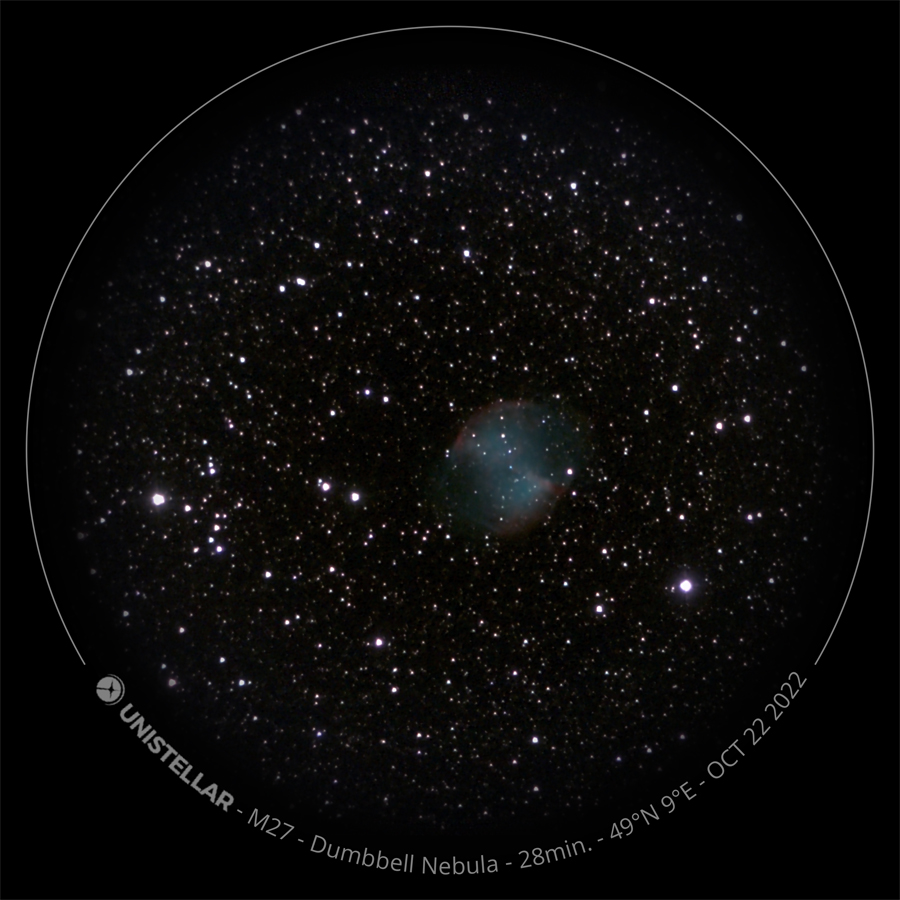 |
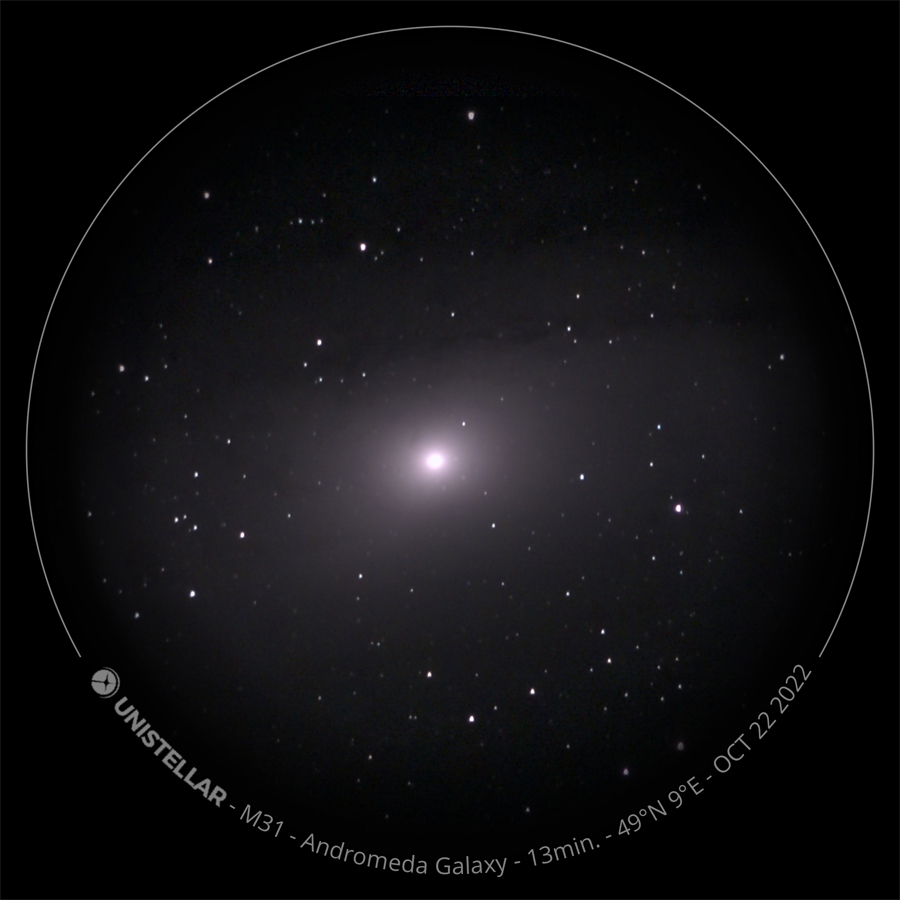 |
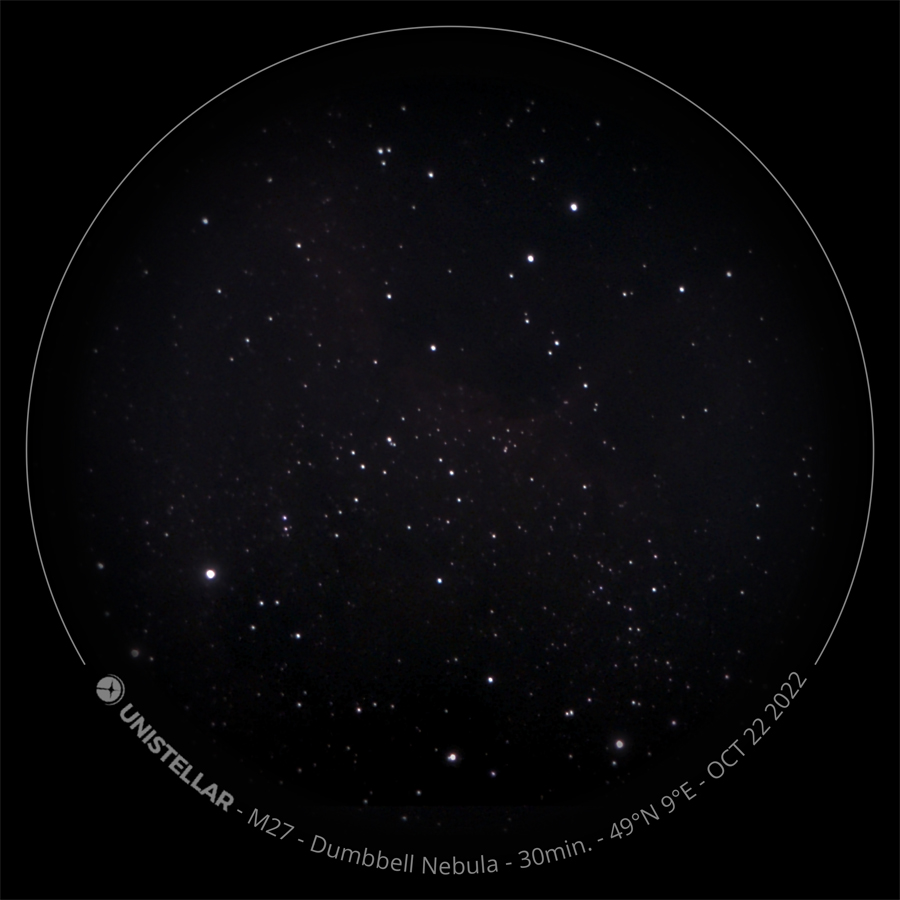 |
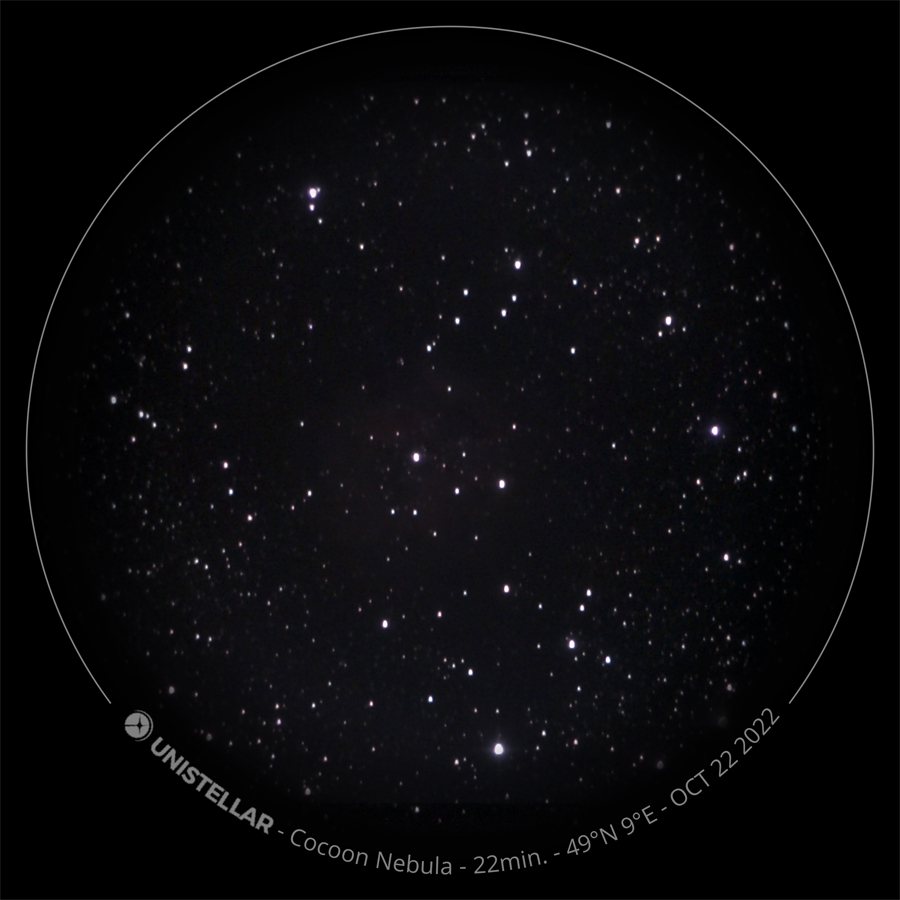 |
|||
| 28 min | 13 min | 30 min | 22 min |
The eVscope 2 photos were taken manually at irregular intervals. Nevertheless, based on the photos one can note the following: Apart from the initial phase (up to about 5 minutes, I know this from other sequences...), the objects hardly if at all get brighter, and the stars do not "grow" over time. Certainly, the noise decreases a bit and the objects become a bit more detailed (although there is nothing to see in that respect here...). However, I cannot recognize a clear and positive effect of longer total exposure times (dwell time in EV mode) after the initial phase. This is a somewhat astonishing result that I already discussed with a star friend, but we did not come to a conclusion with respect to the differences.
Comparison
Object Brightness
The DSO on the eVscope 2 photos are clearly darker than those on the Vespera photos. Moreover, while the latter become brighter and brighter with time, this changes little or not at all in the eVscope 2 images, so that the difference between the telescopes becomes more and more obvious in the course of the observations.
While brighter objects may still be used without post-processing with the eVscope, darker objects such as large scale nebulae will definitely need post-processing to see anything at all. The Vespera photos are not well suited for post-processing, at least in the JPG version, but in many cases this is not necessary.
In the following example, the Vespera photo of the Pelican Nebula IC 5050 already shows nebular structures in the original; brightened up, they are much better visible (this time). The original eVscope 2 photo of IC 5070, on the other hand, is largely dark, and only by brightening do structures become visible - albeit at low contrast; a contrast increase therefore improves the image impression:
The colors of the eVscope 2 have a tinge of violet, while they are more yellowish with the Vespera...
Details / Size of Objects
With respect to details, the eVscope 2 wins "by a wide margin" because pixelwise, the DSO are a lot larger on the photos than the DSO on the Vespera photos. And it is evident that the Vespera photos show far less details than those taken with the eVscope 2.
Now to a demonstration example! For this example, I took a 1280 x 960 crop on the Vespera photo of M 27 and thus, show the original pixels. I scaled down the eVscope 2 photo of M 27 from 3200 x 2400 to 2048 x 1536 pixels to get a sensor-sized image. From this, I took a 1280 x 960 crop. As a result, you can see that M 27 appears much smaller in the Vespera than in the eVscope 2. The Vespera image also clearly shows less details (see also page Photo Comparison against Unistellar eVscope (2) - Part 2):
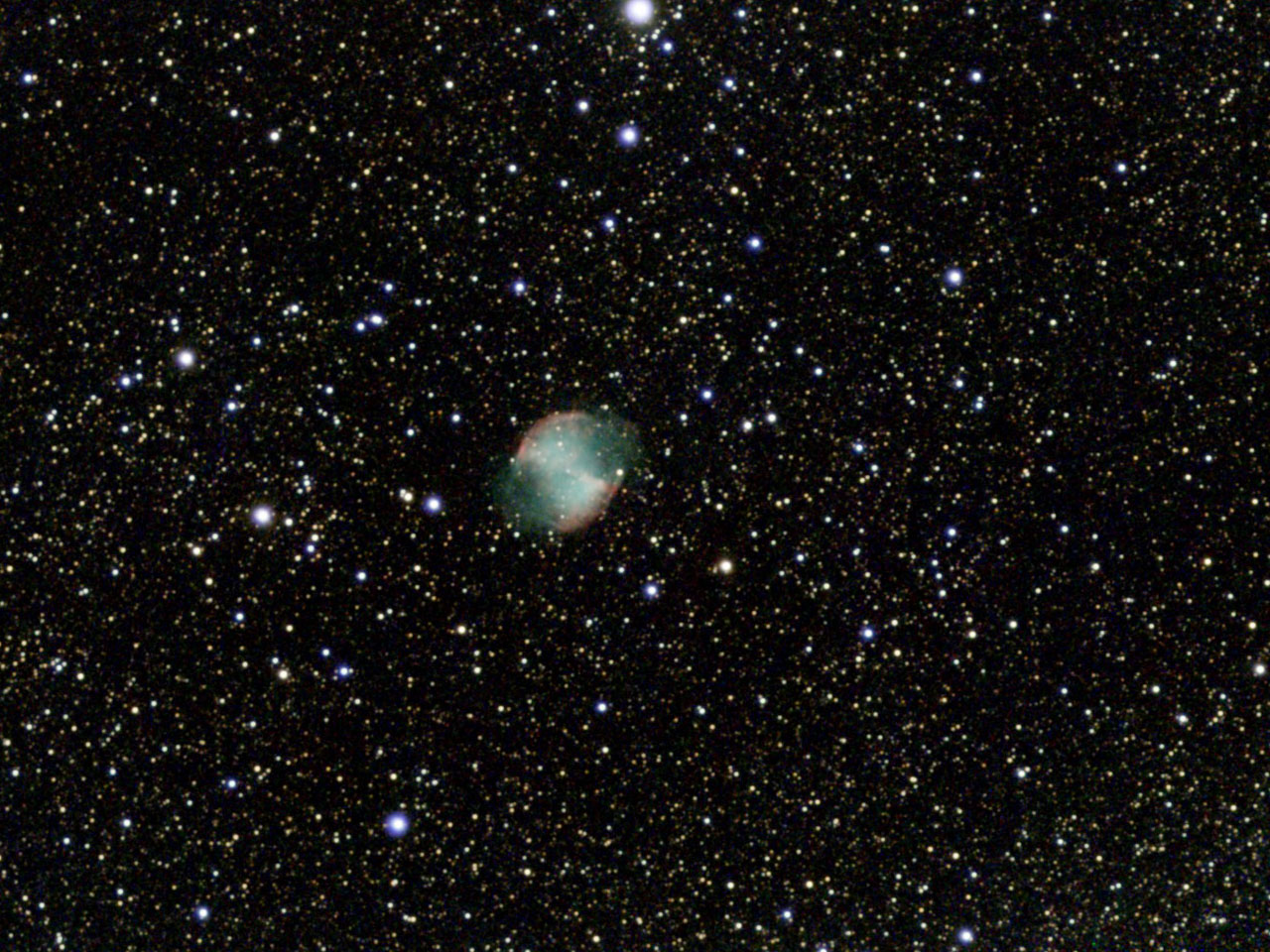 |
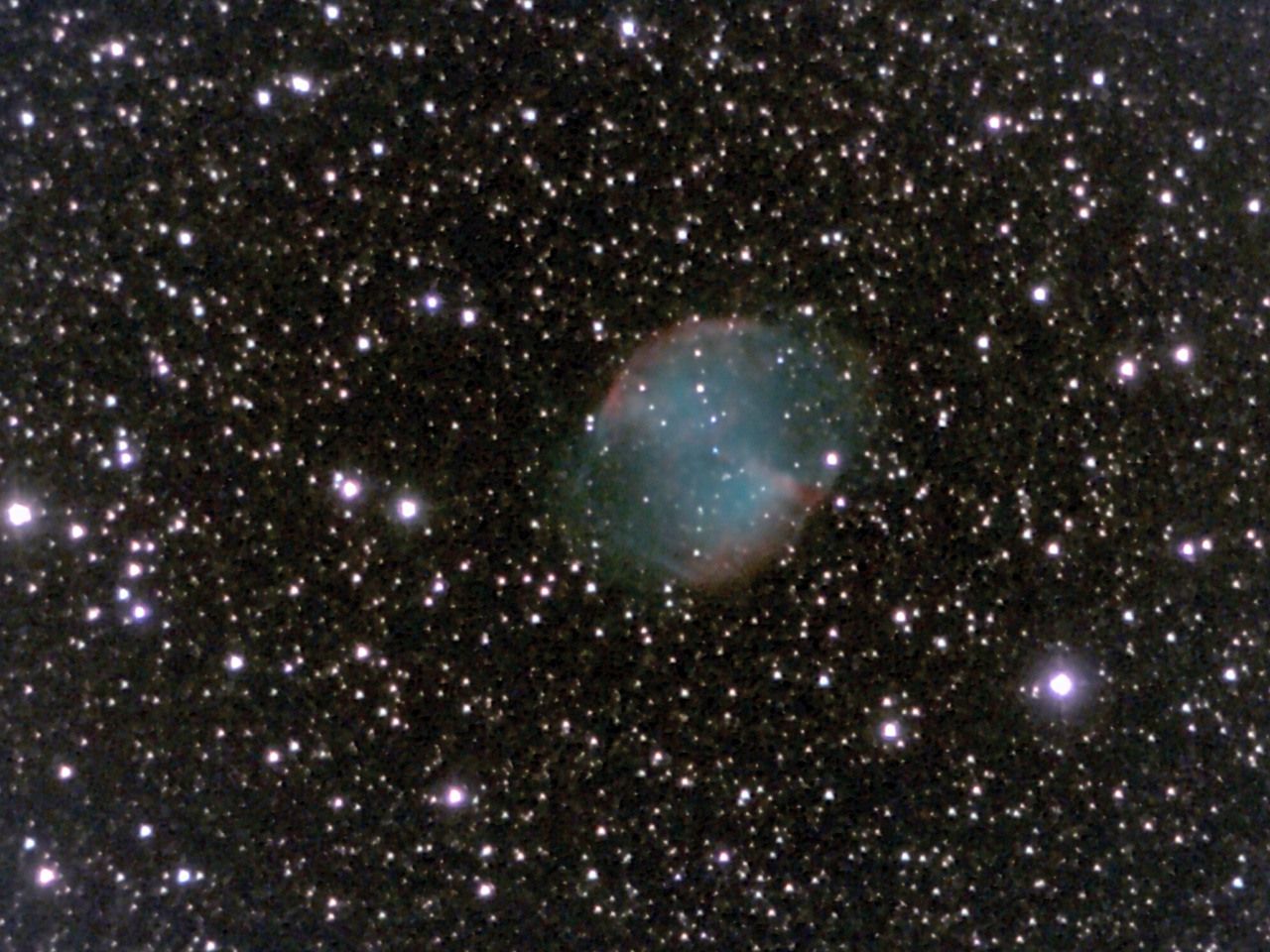 |
|
Vespera: M 27 cropped to 1280 x 960 pixels (30 min) |
eVscope 2: M 27 scaled down and cropped to 1280 x 960 pixels, made brighter (28 min) |
First Conclusions
Even though both telescopes, the Vespera and the eVscope 2, pursue similar goals, the results that they deliver look quite different. Right off the bat, the Vespera photos look better than the eVscope 2 photos and usually need no or only minor post-processing. But when it comes to detail, the eVscope is clearly ahead because of the larger pixel numbers. My idea of selling the eVscope 2 because the Vespera is so much better than the eVscope 2 probably does not hold up....
Right now, it looks like this for me: I will use the eVscope 2 for smaller single objects, the Vespera for (larger) nebulae and for multiple objects in the same field of view.
Update: In the end, I decided to sell my eVscope 2 (end of 2023).
Links
- Vaonis: vaonis.com/fr (FR), vaonis.com (EN)
- Vespera Kickstarter-Kampagne: www.kickstarter.com/projects/vaonis/vespera-the-new-way-to-observe-the-universe/description
- Vespera/Stellina comparison page: vaonis.com/stellina-vs-vespera (EN)
- Vespera FAQ: support.vaonis.com/portal/en/kb/faq/vespera (EN)
- See also my page offering Astronomy Links.
| 11.06.2024 |
